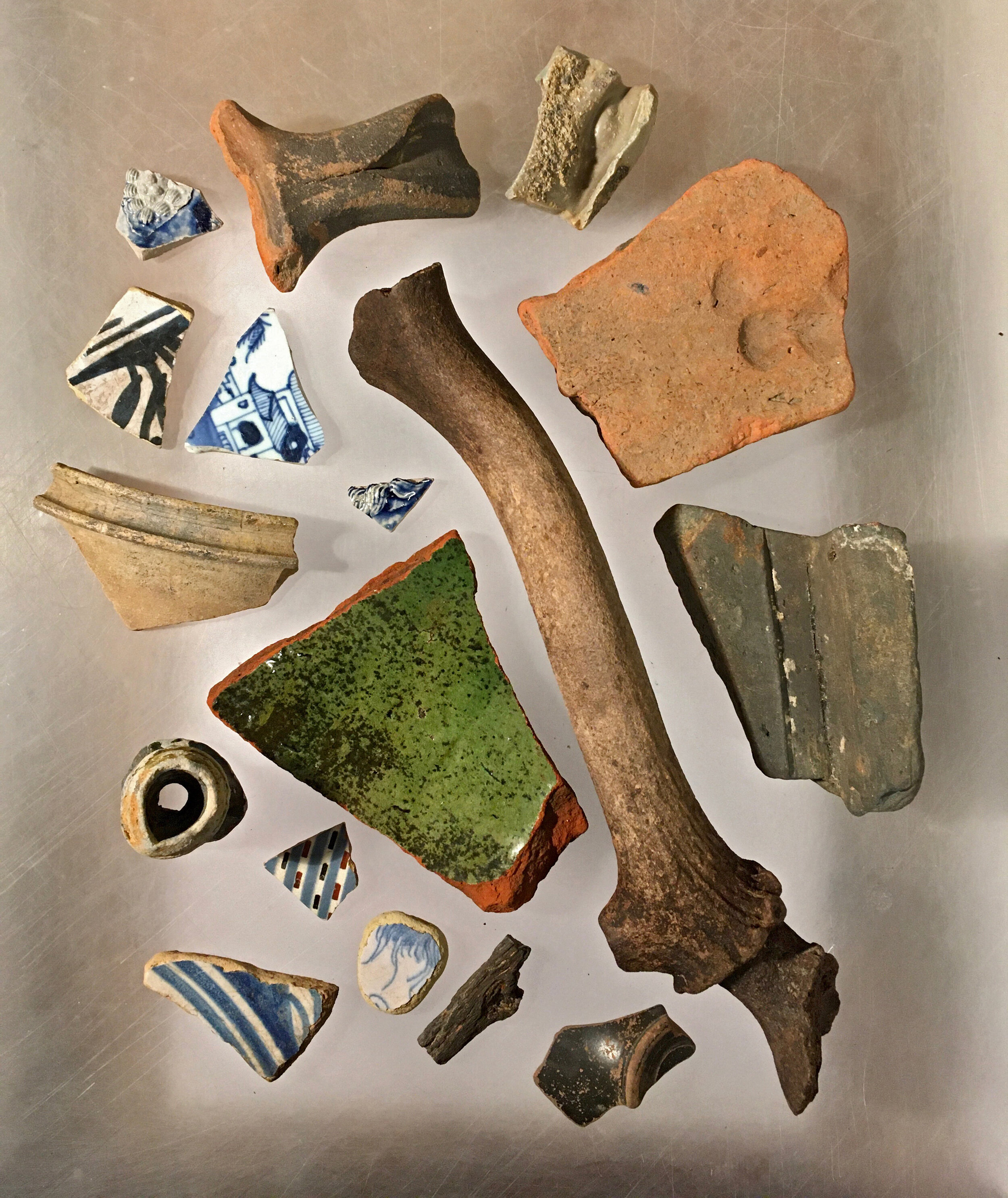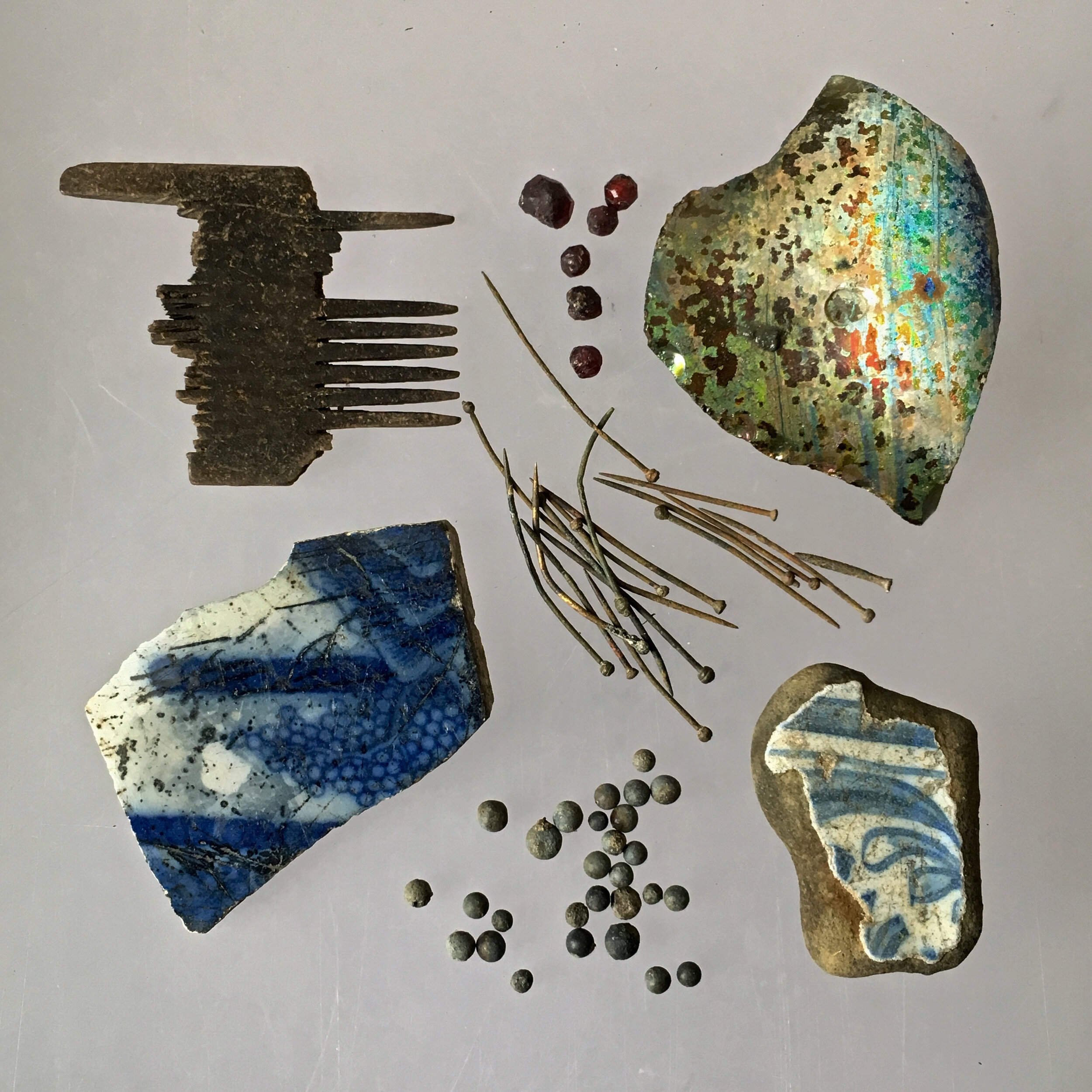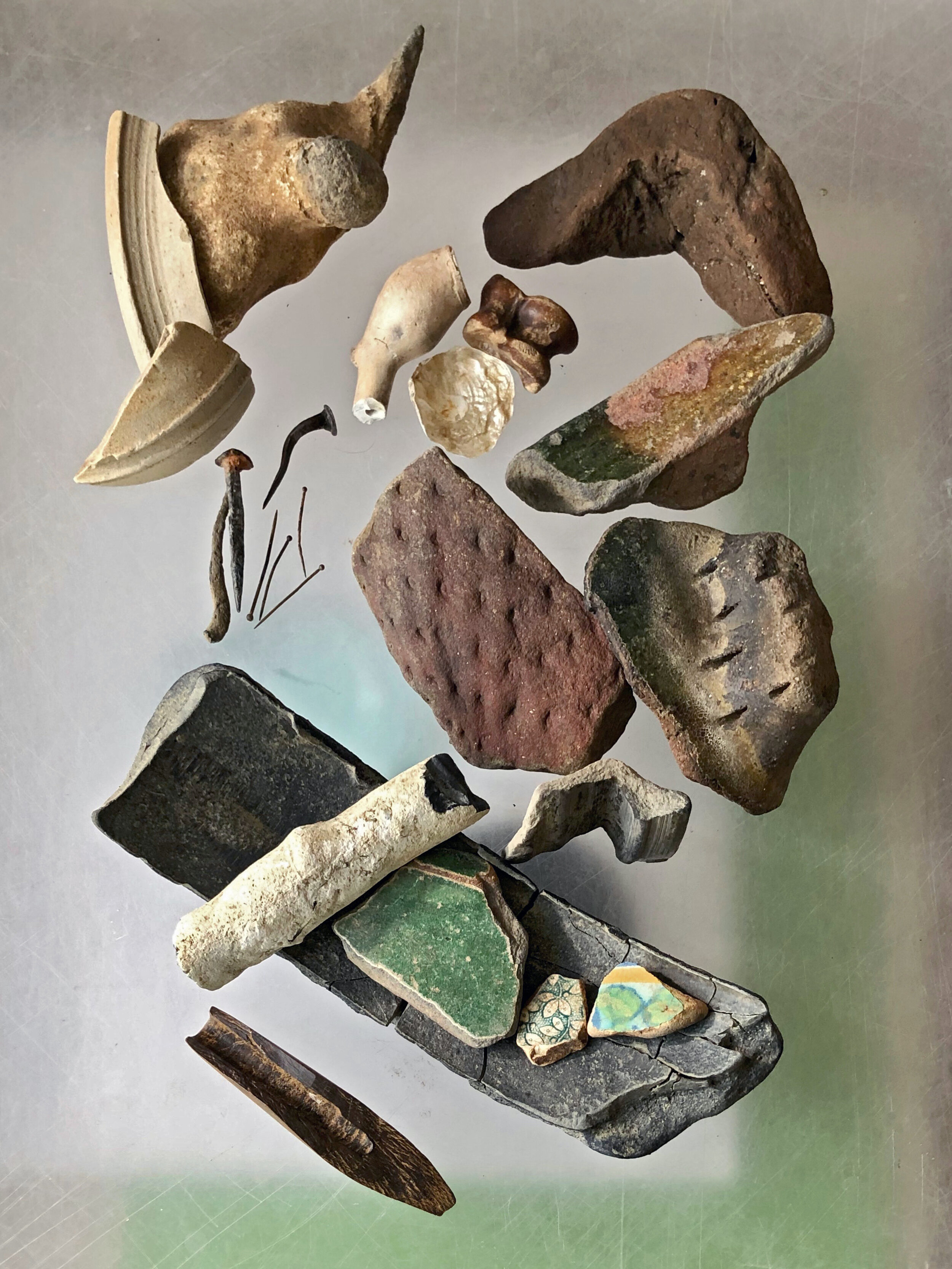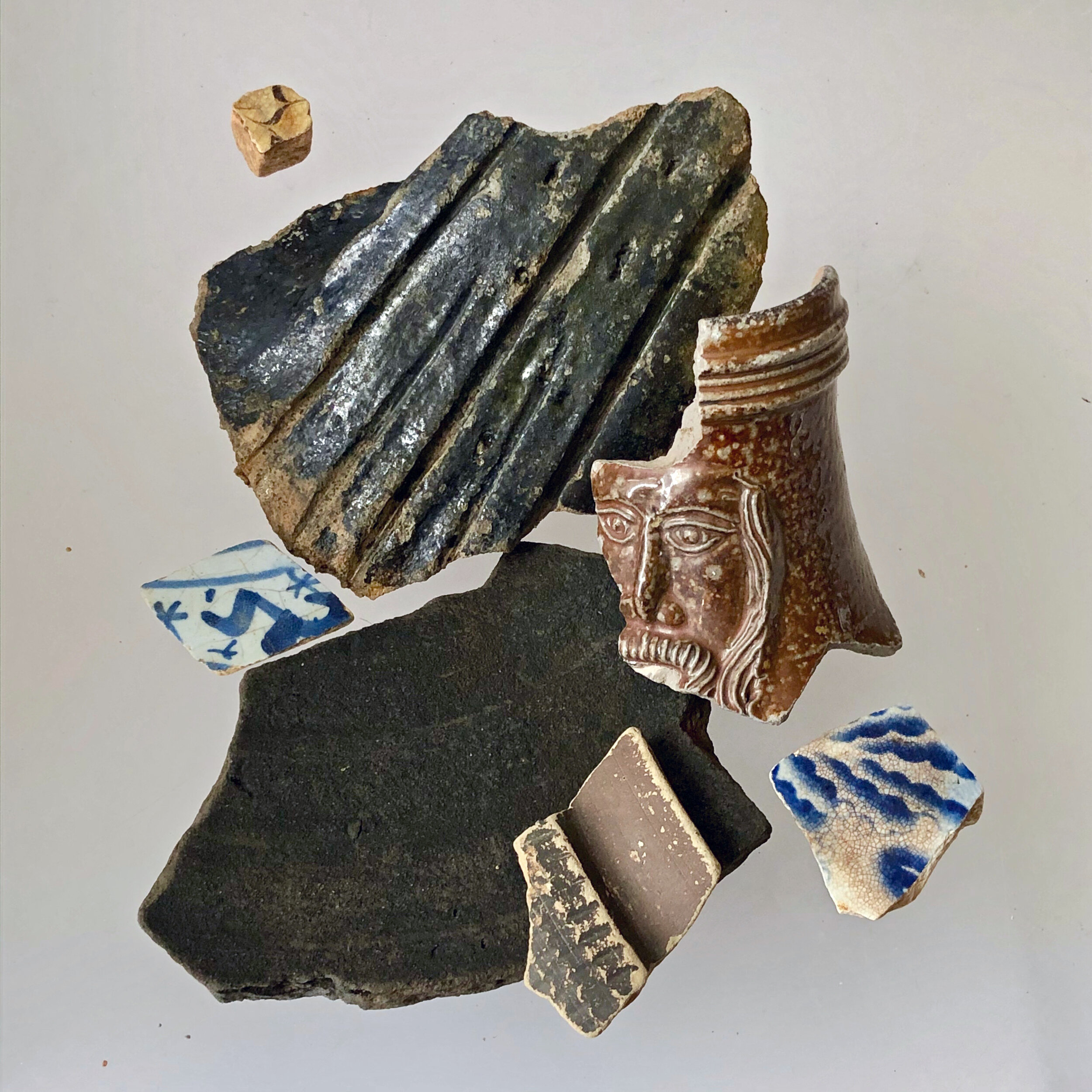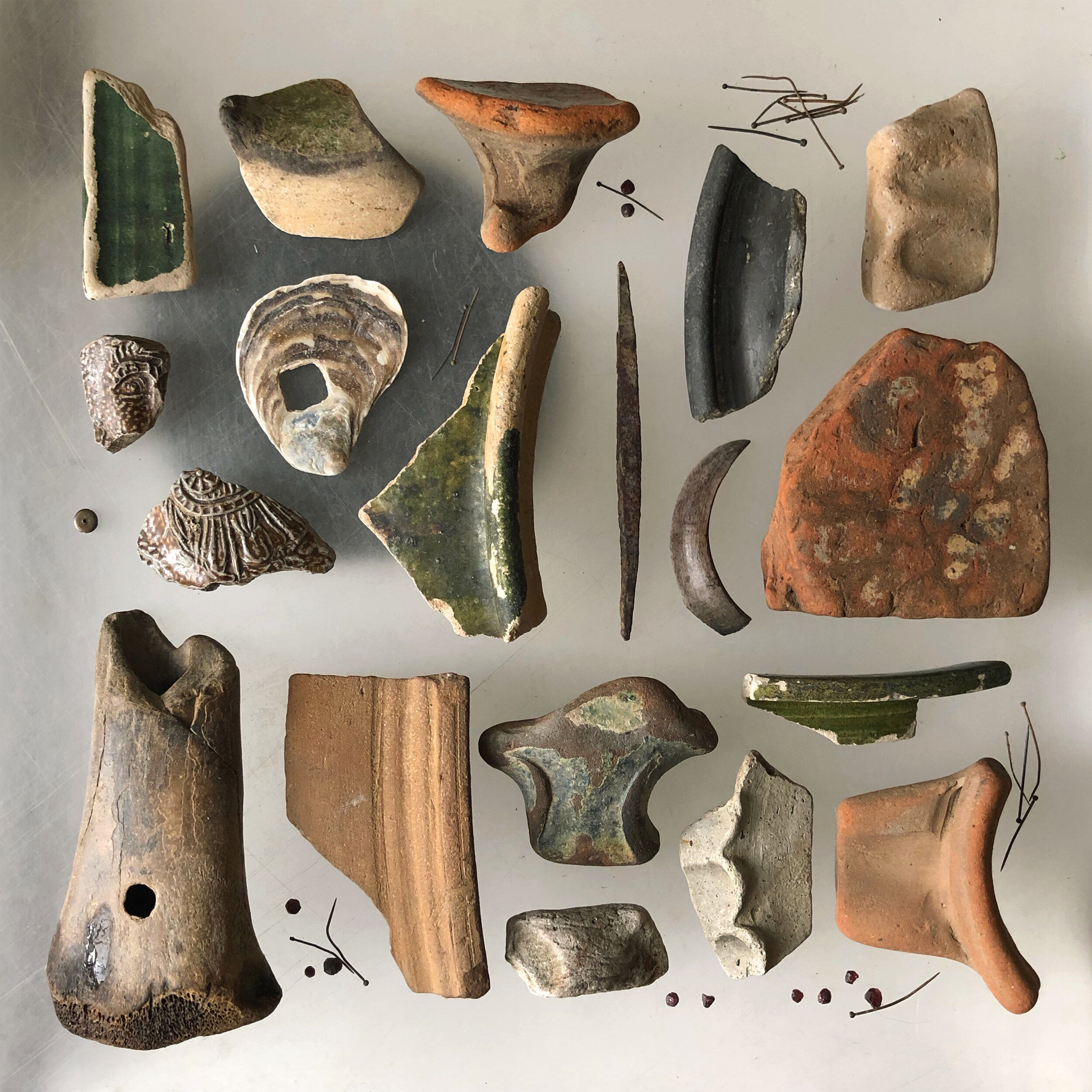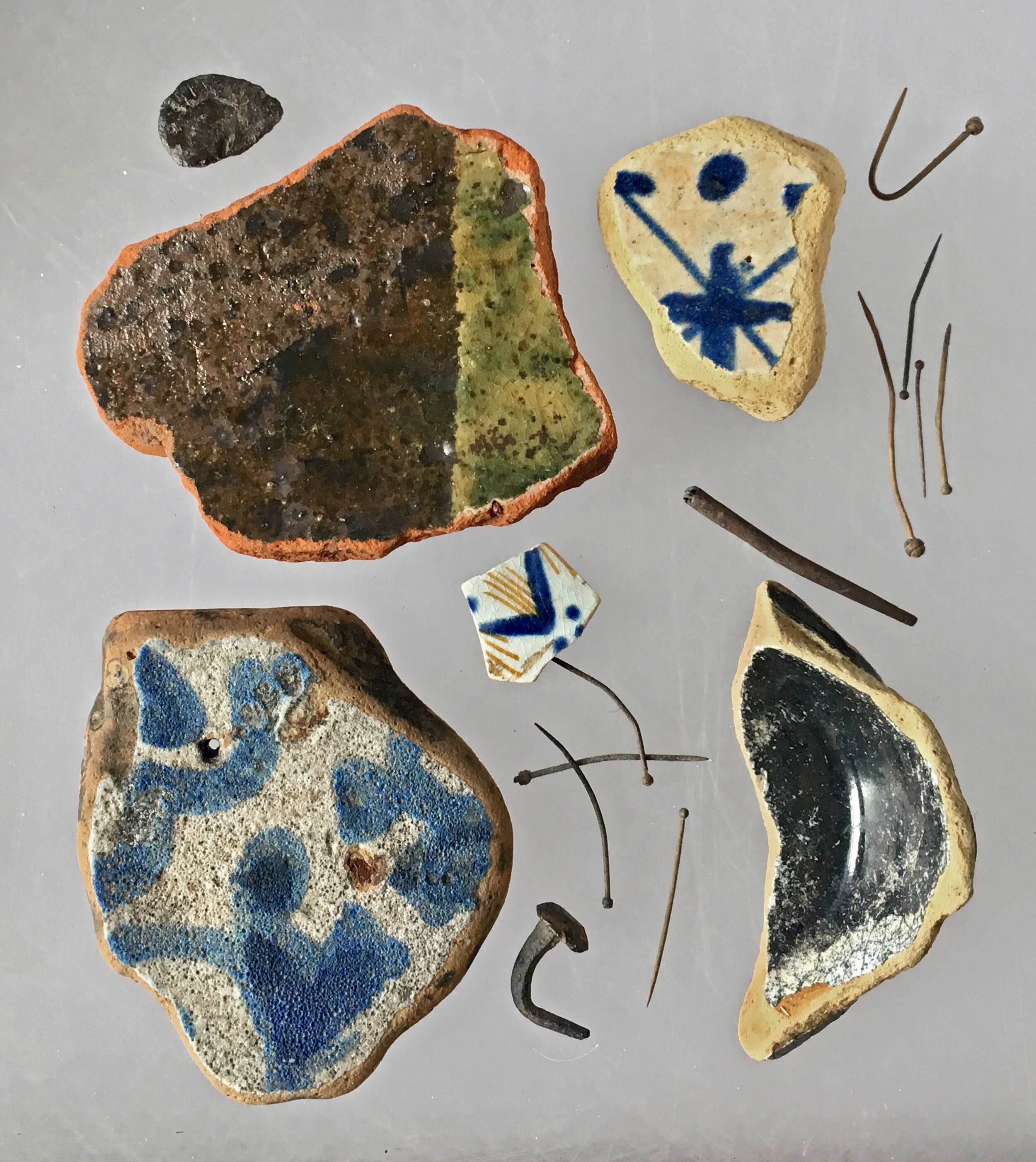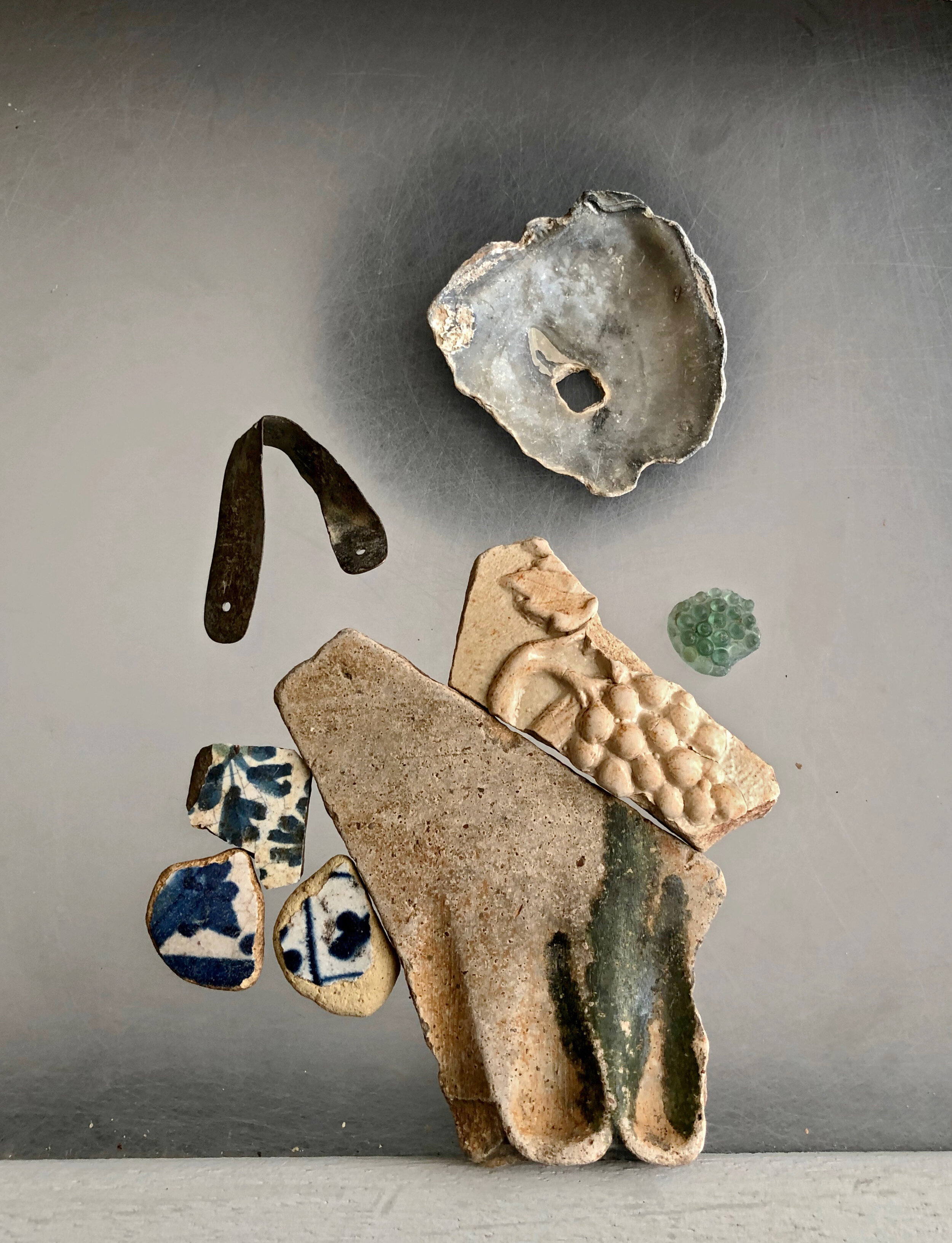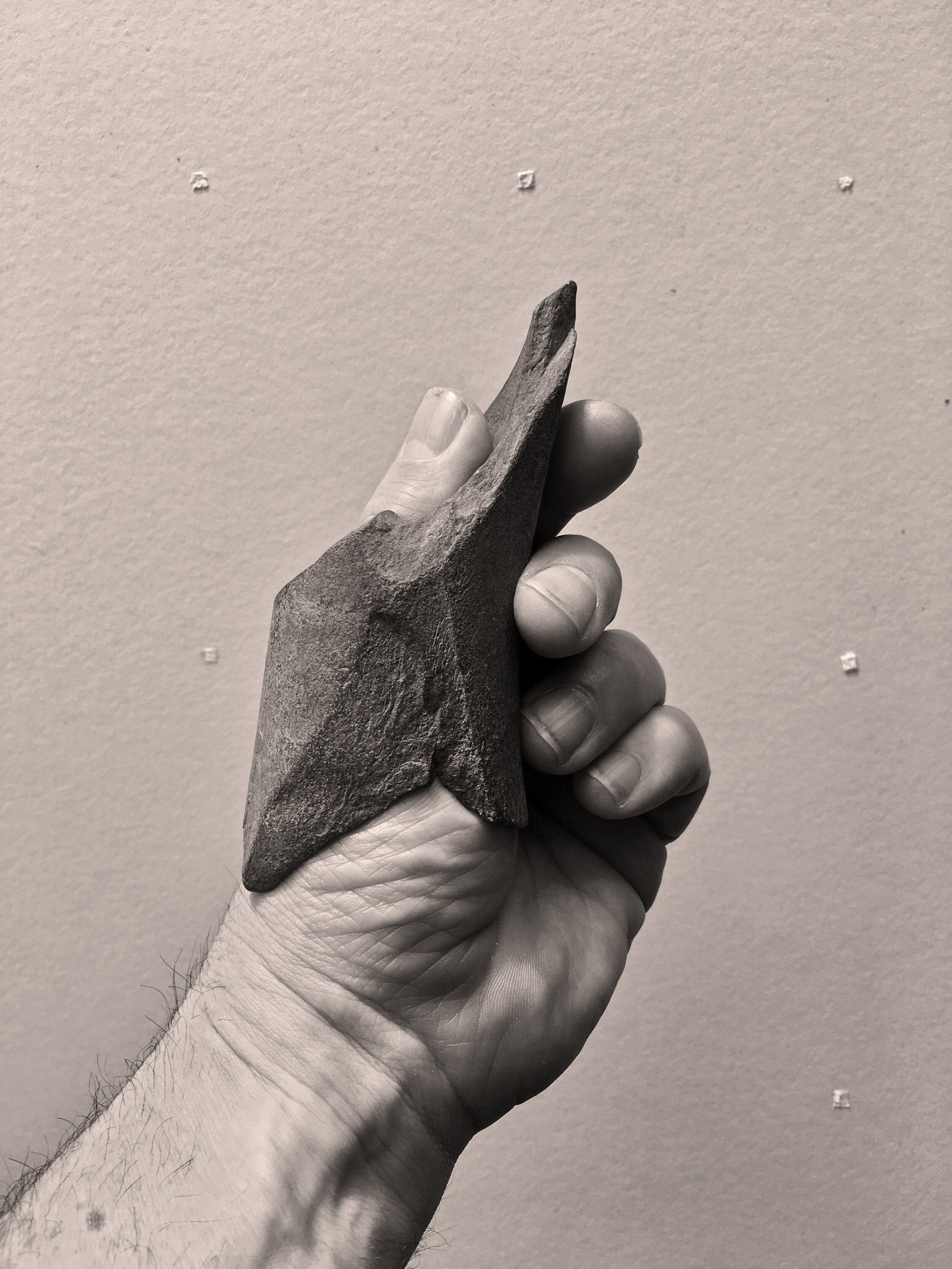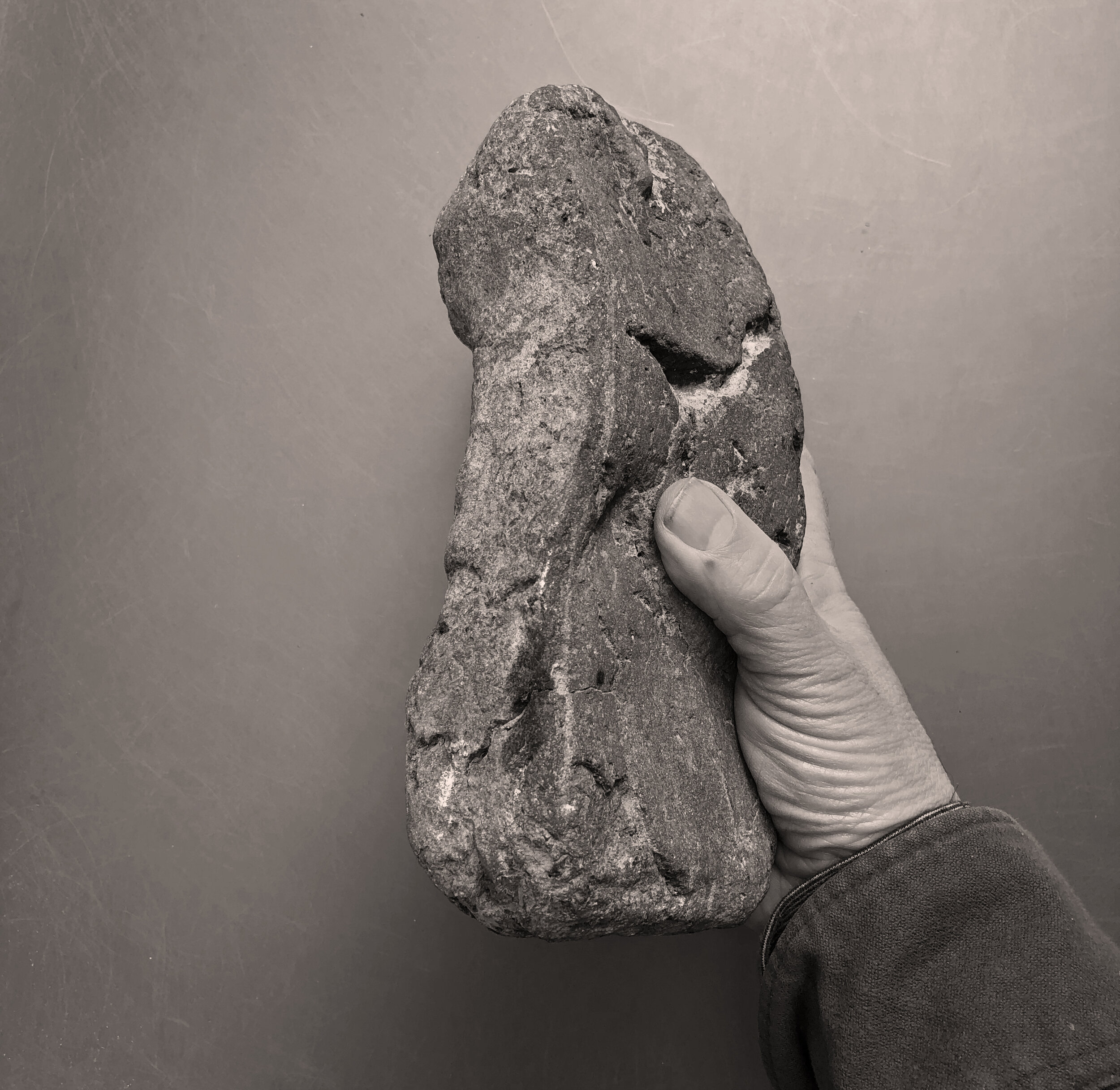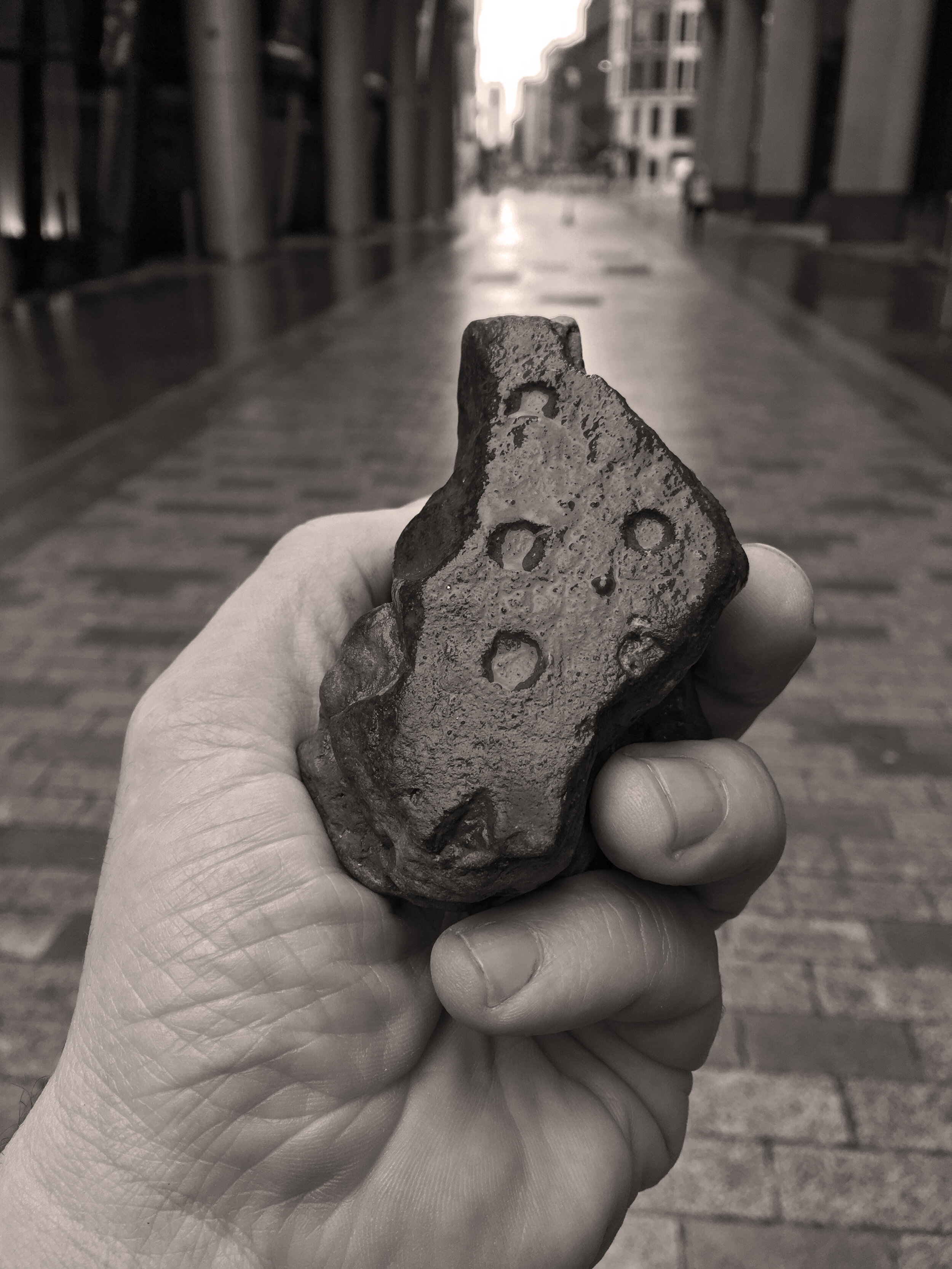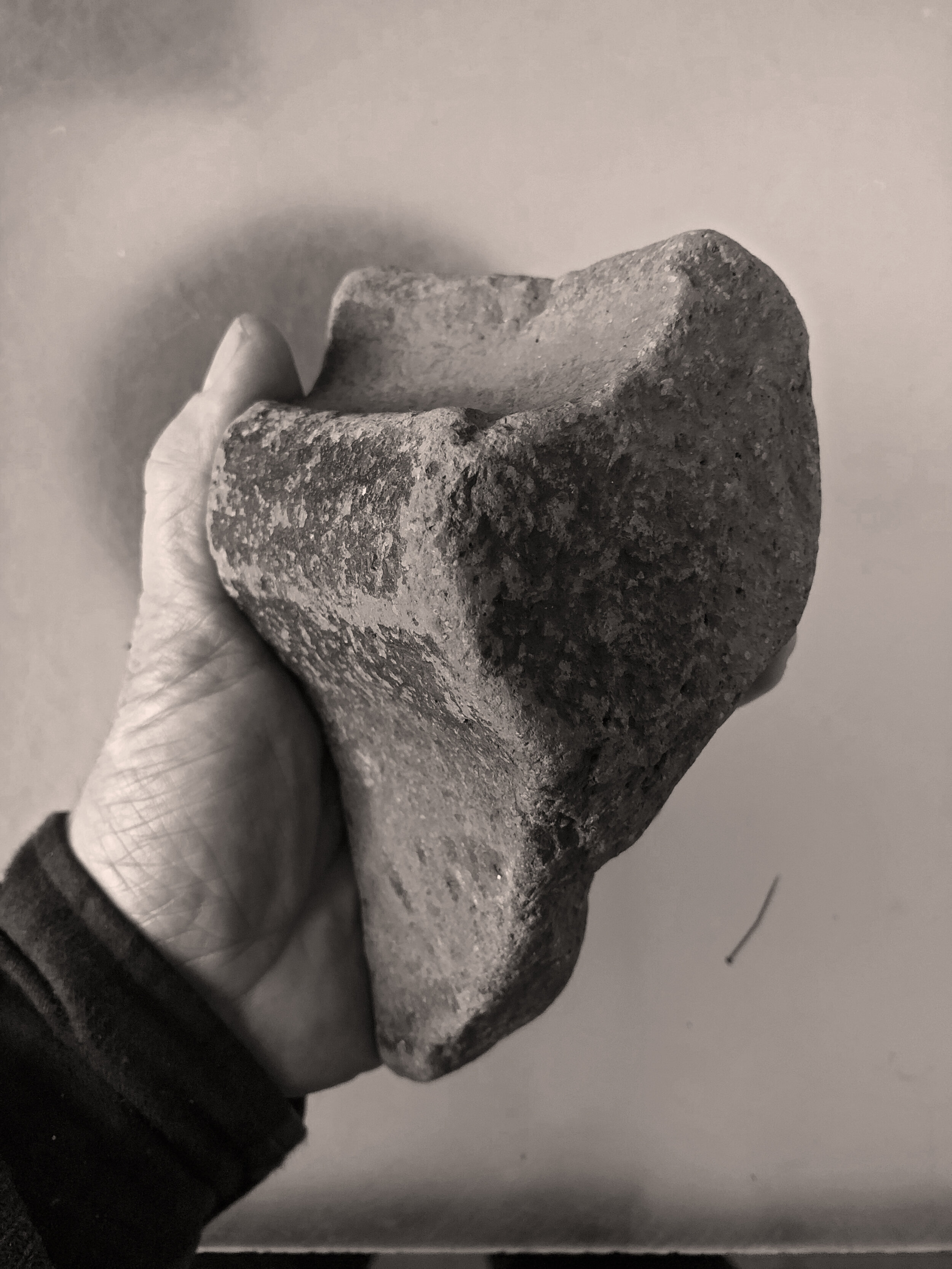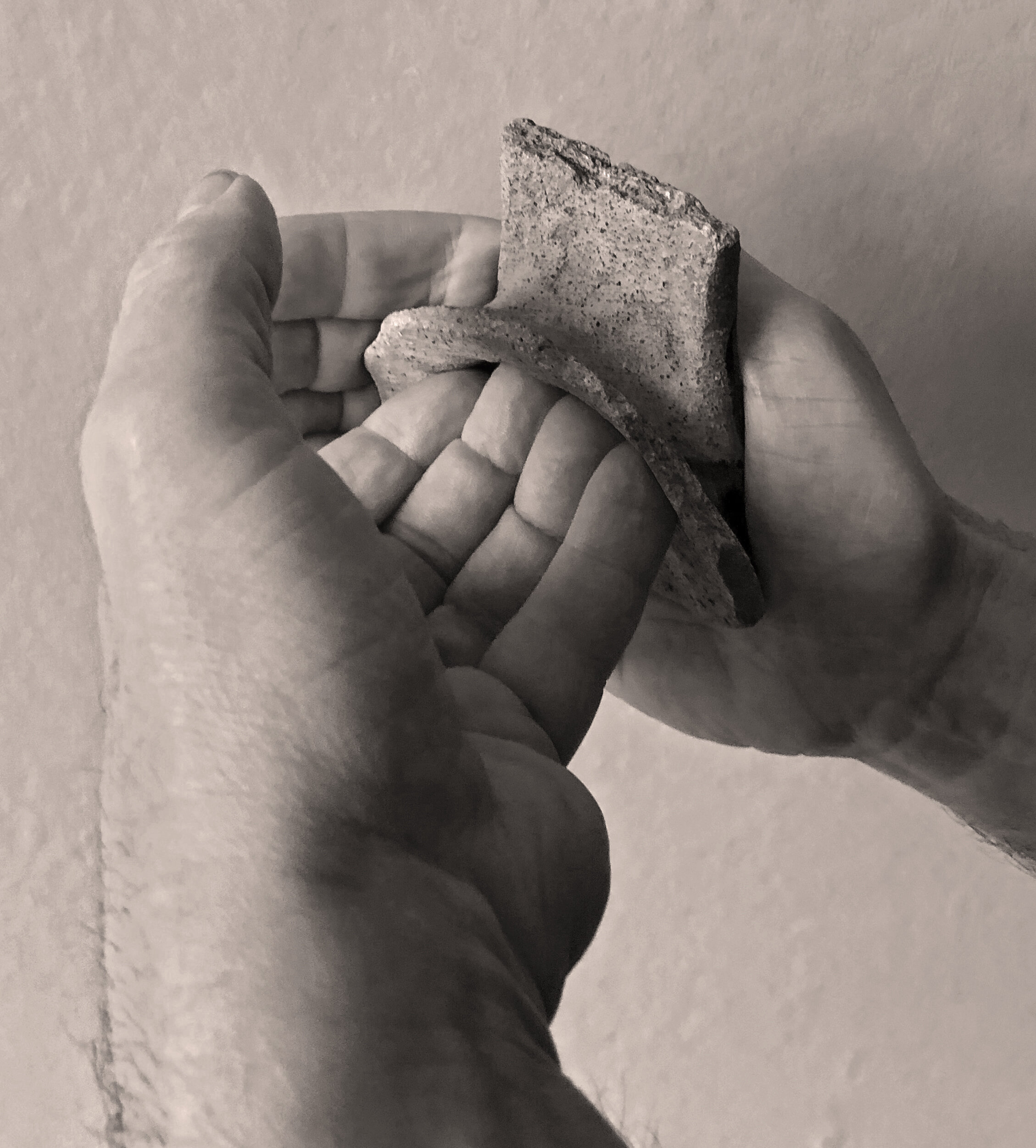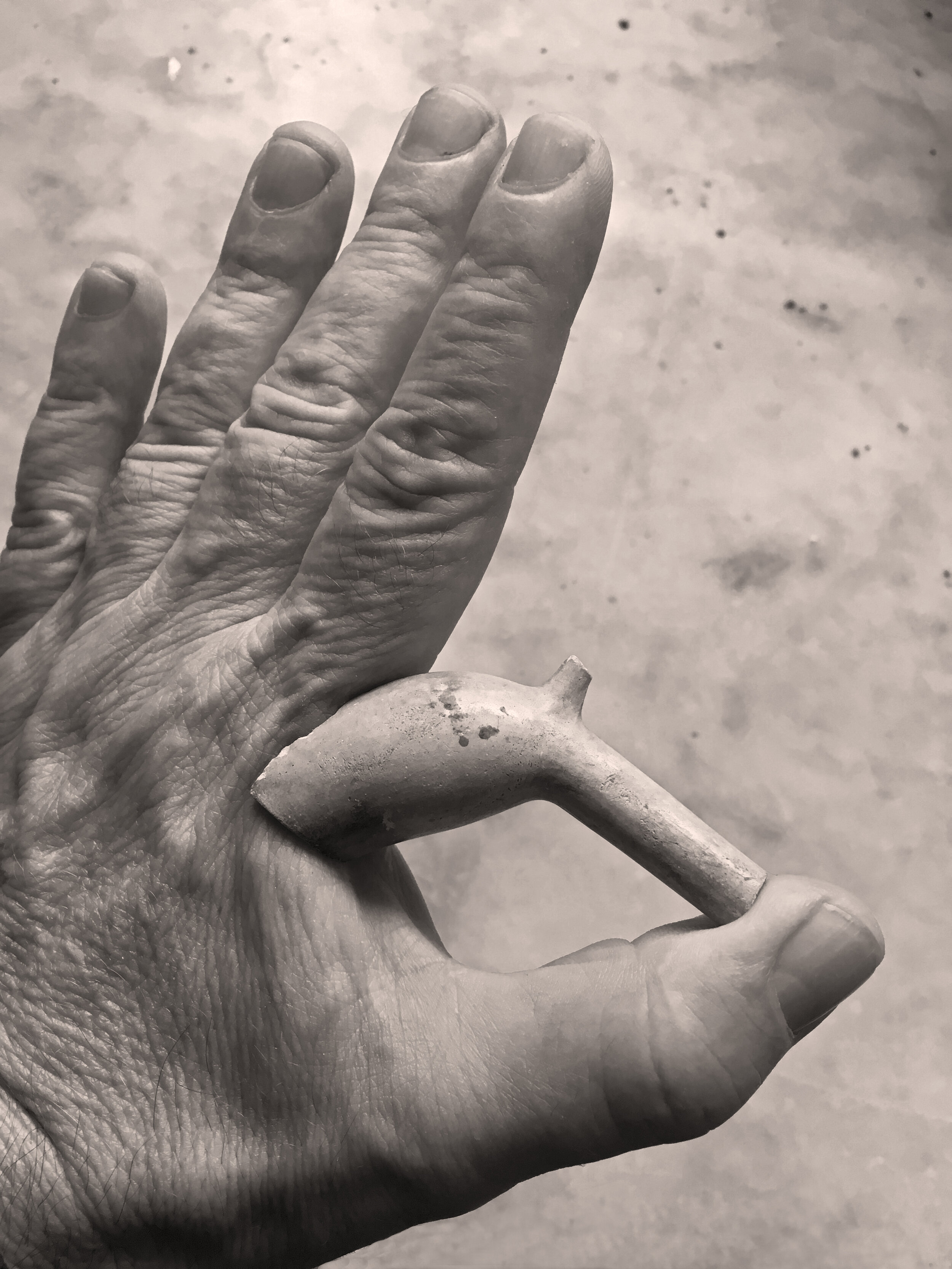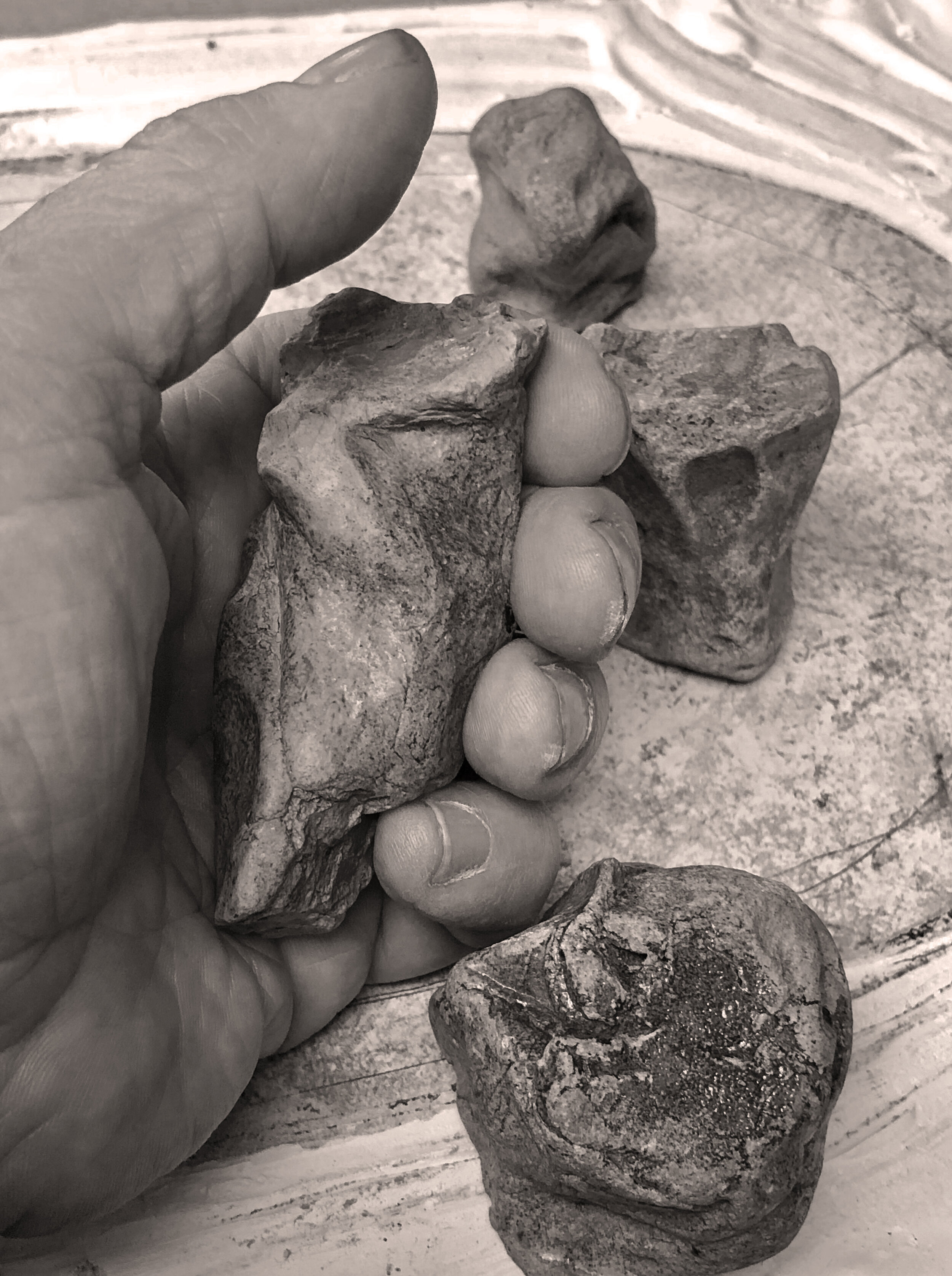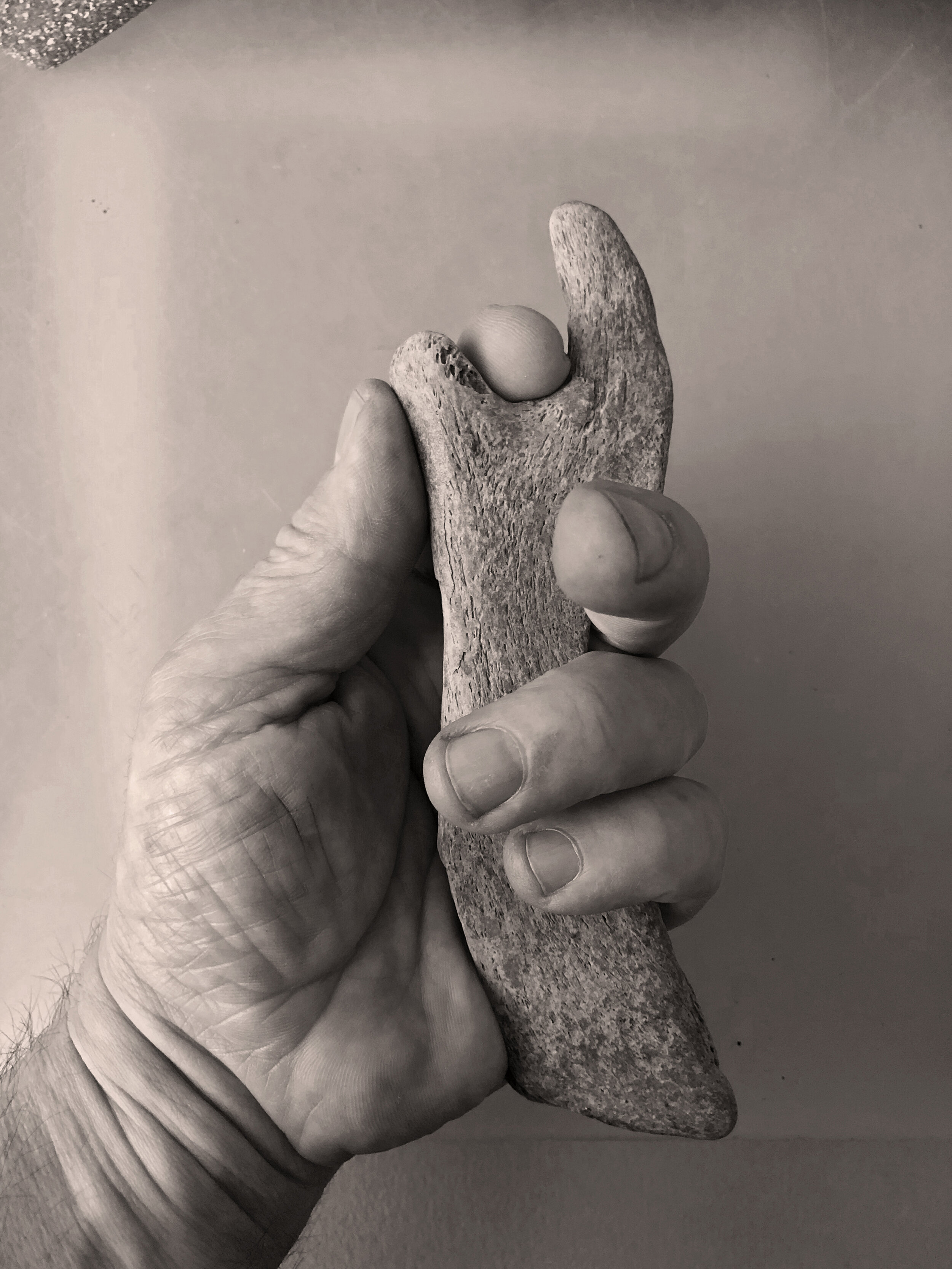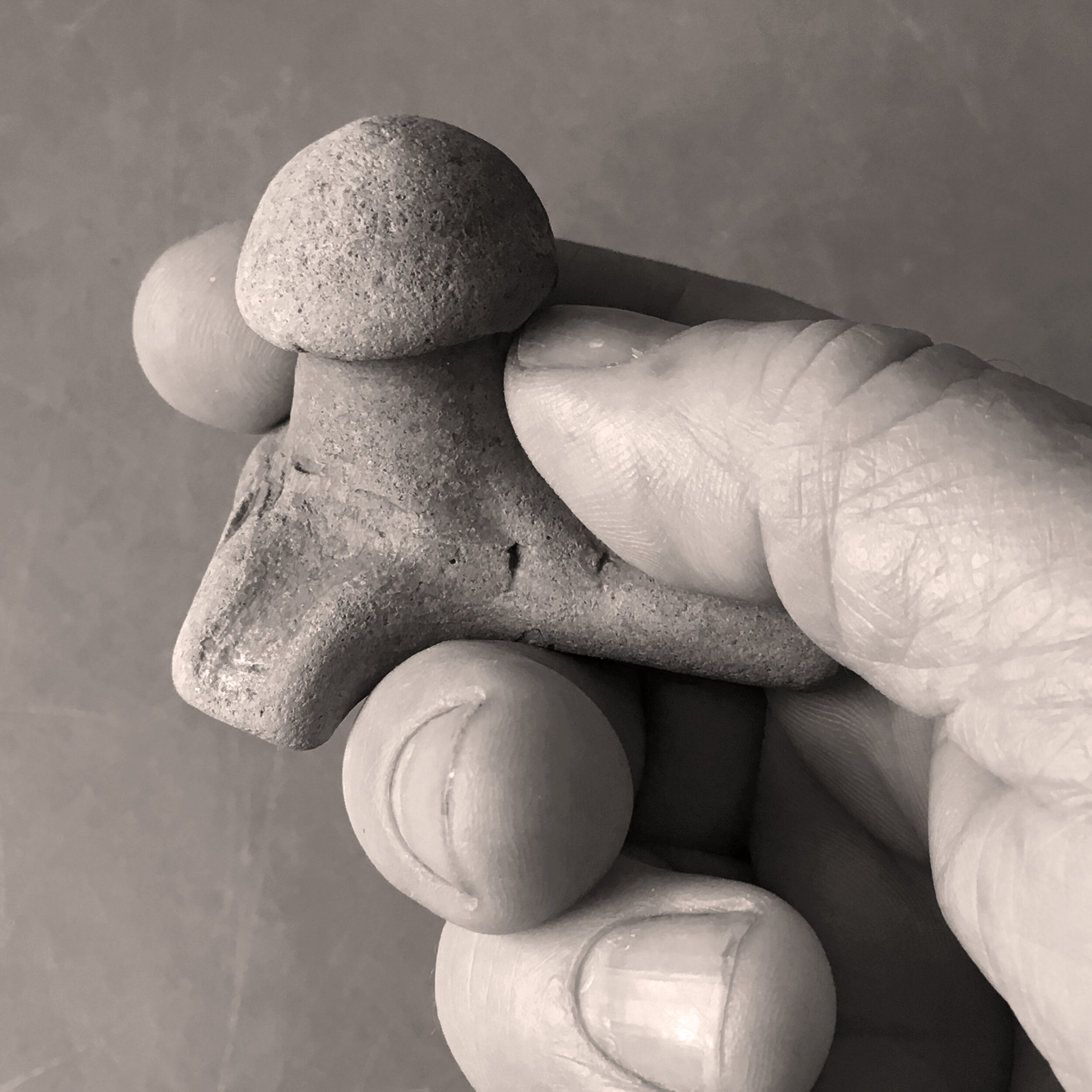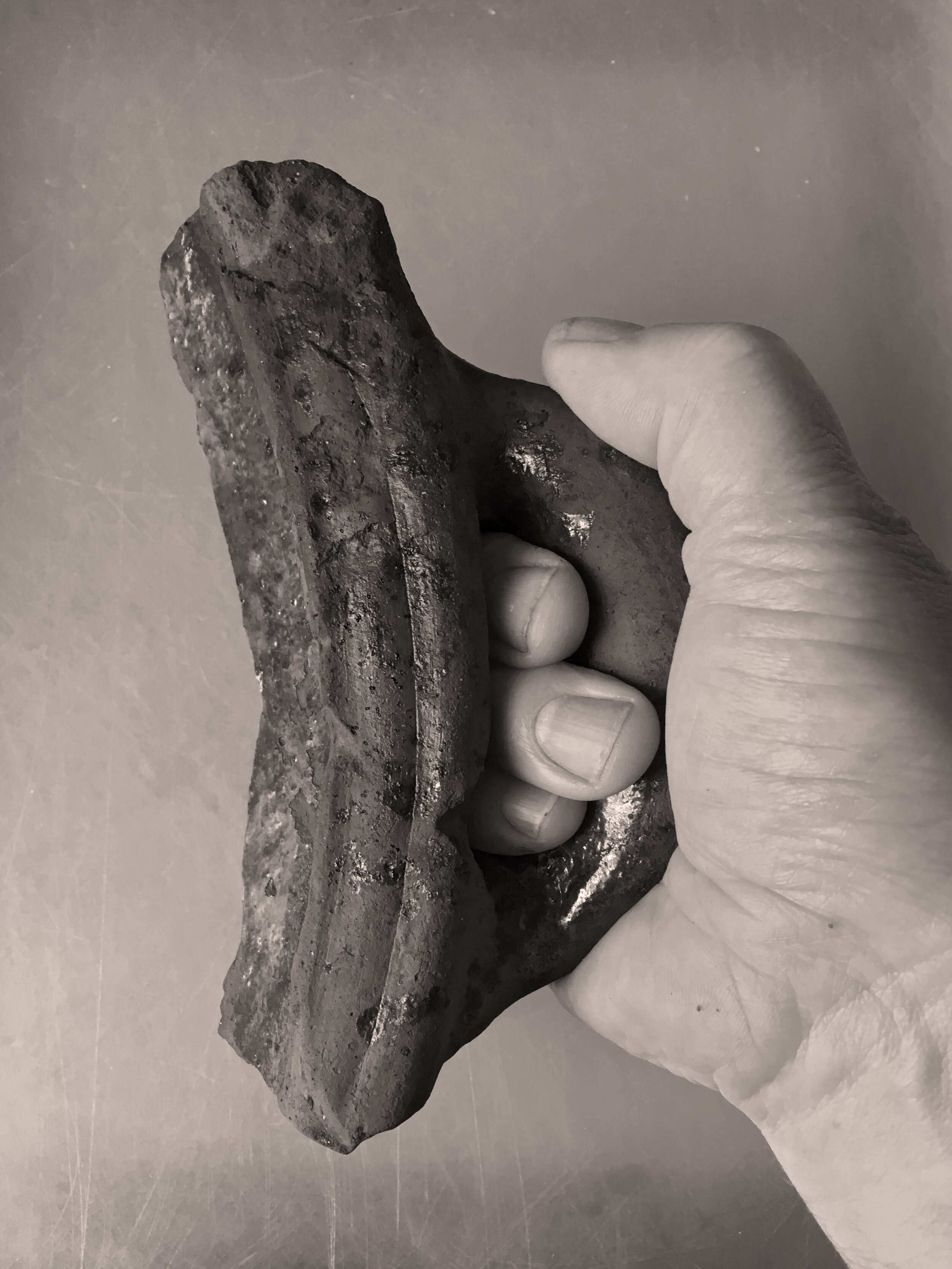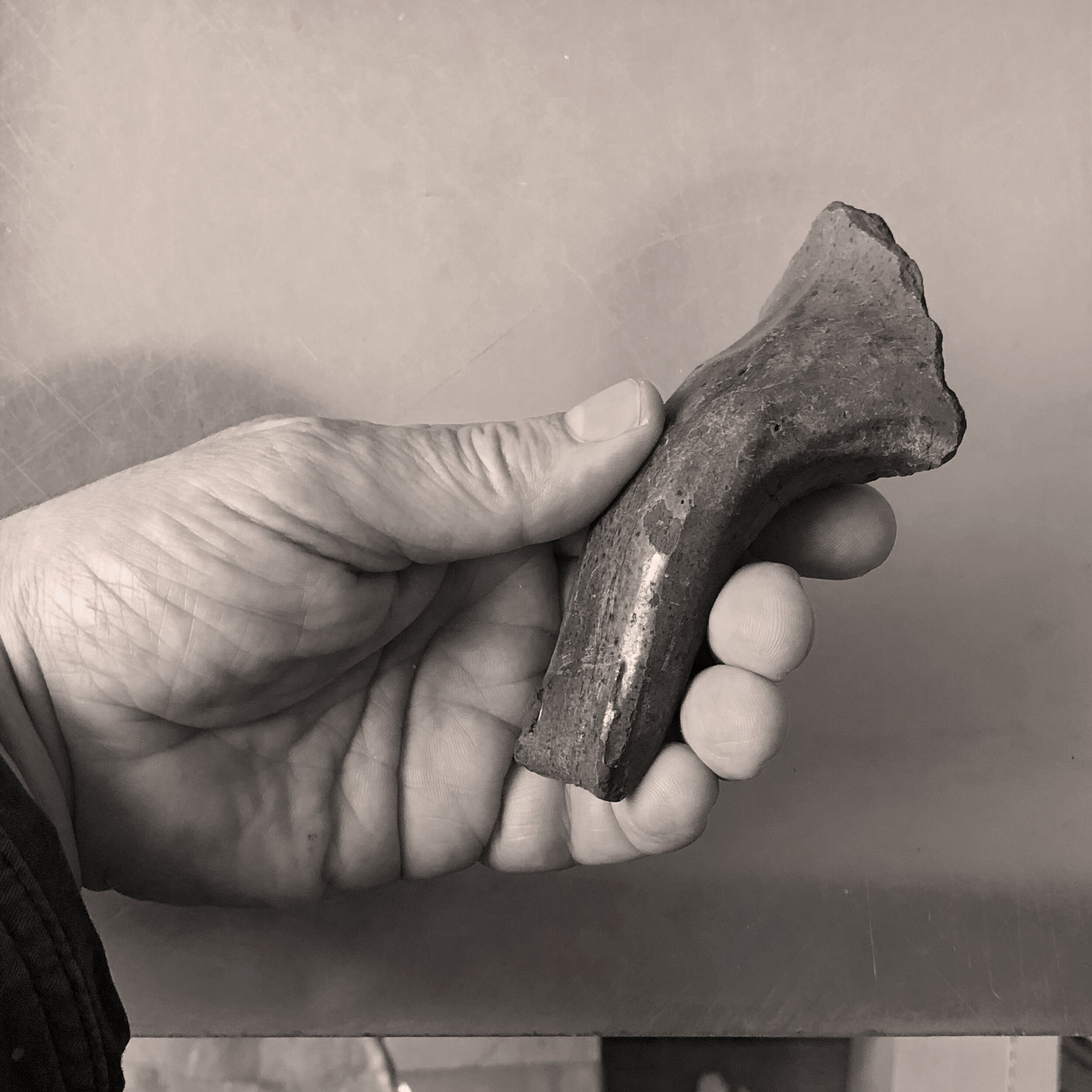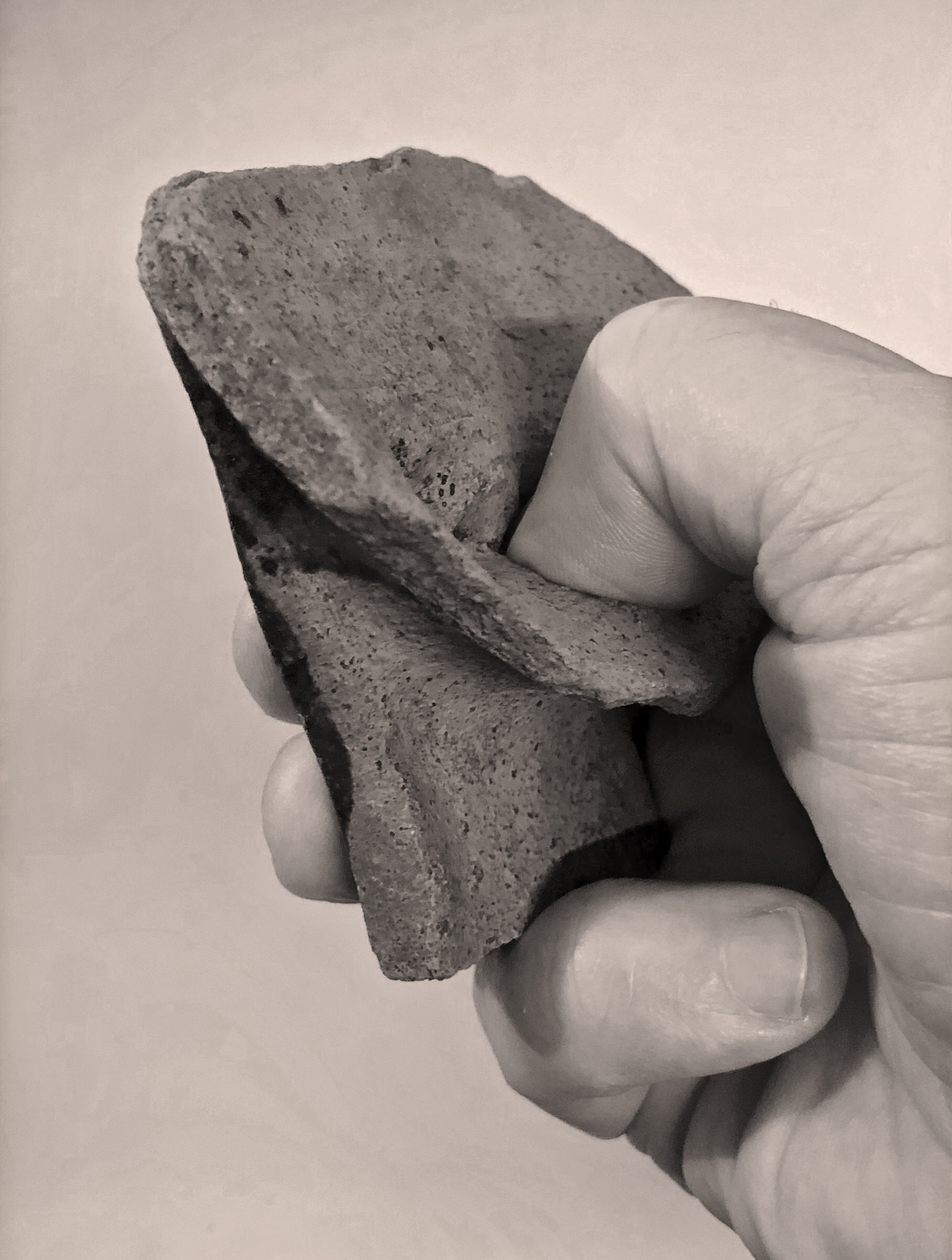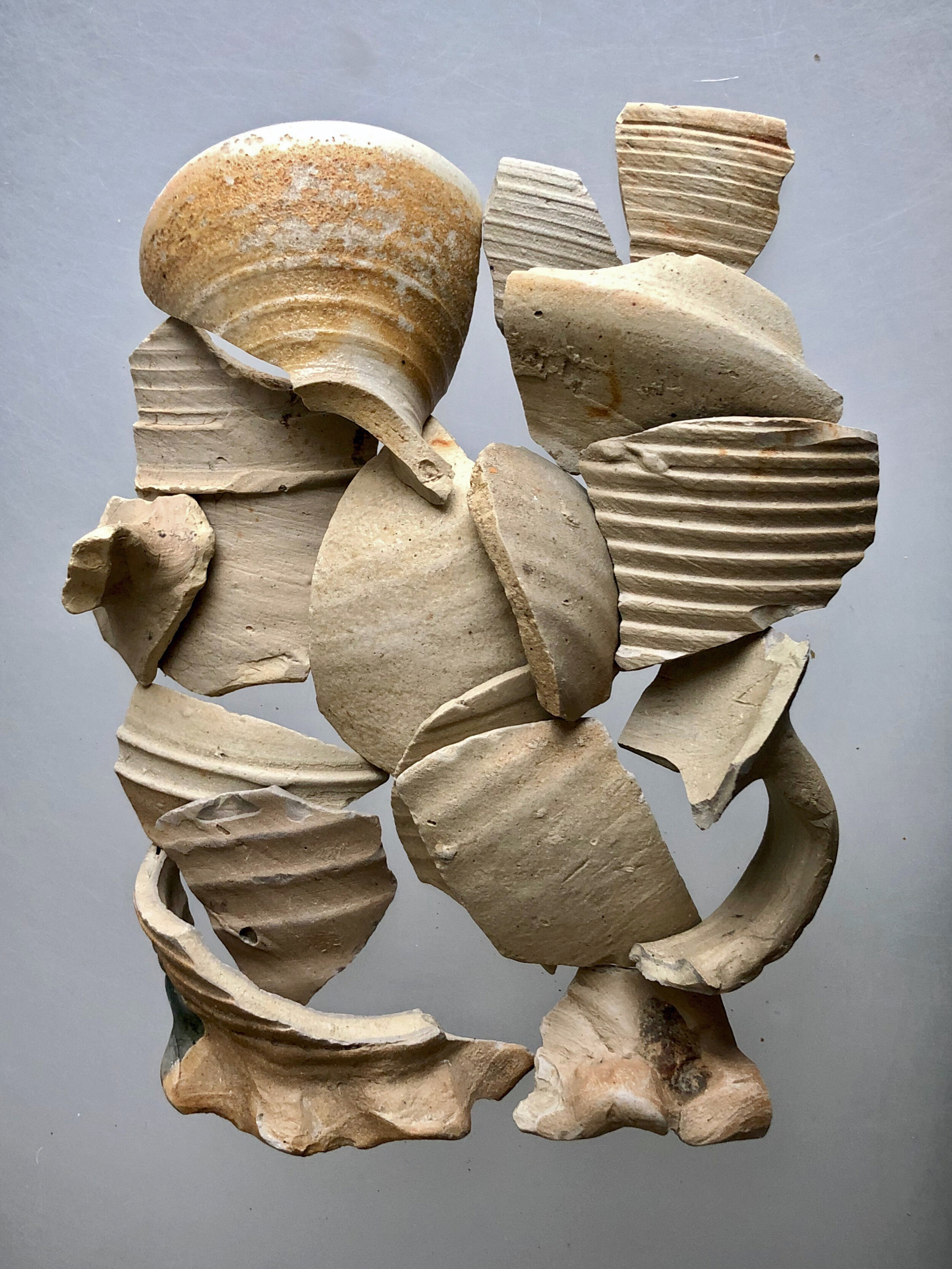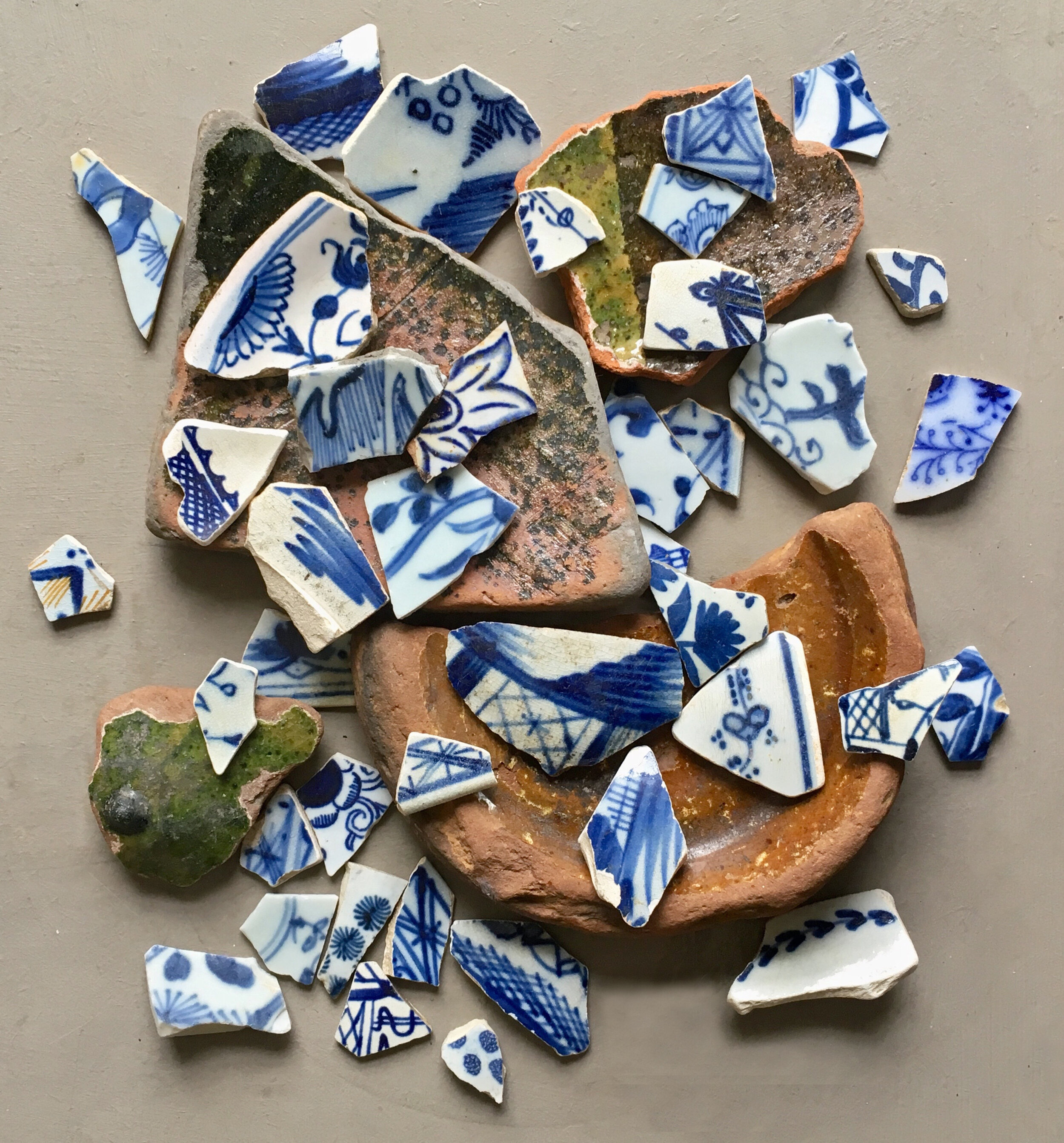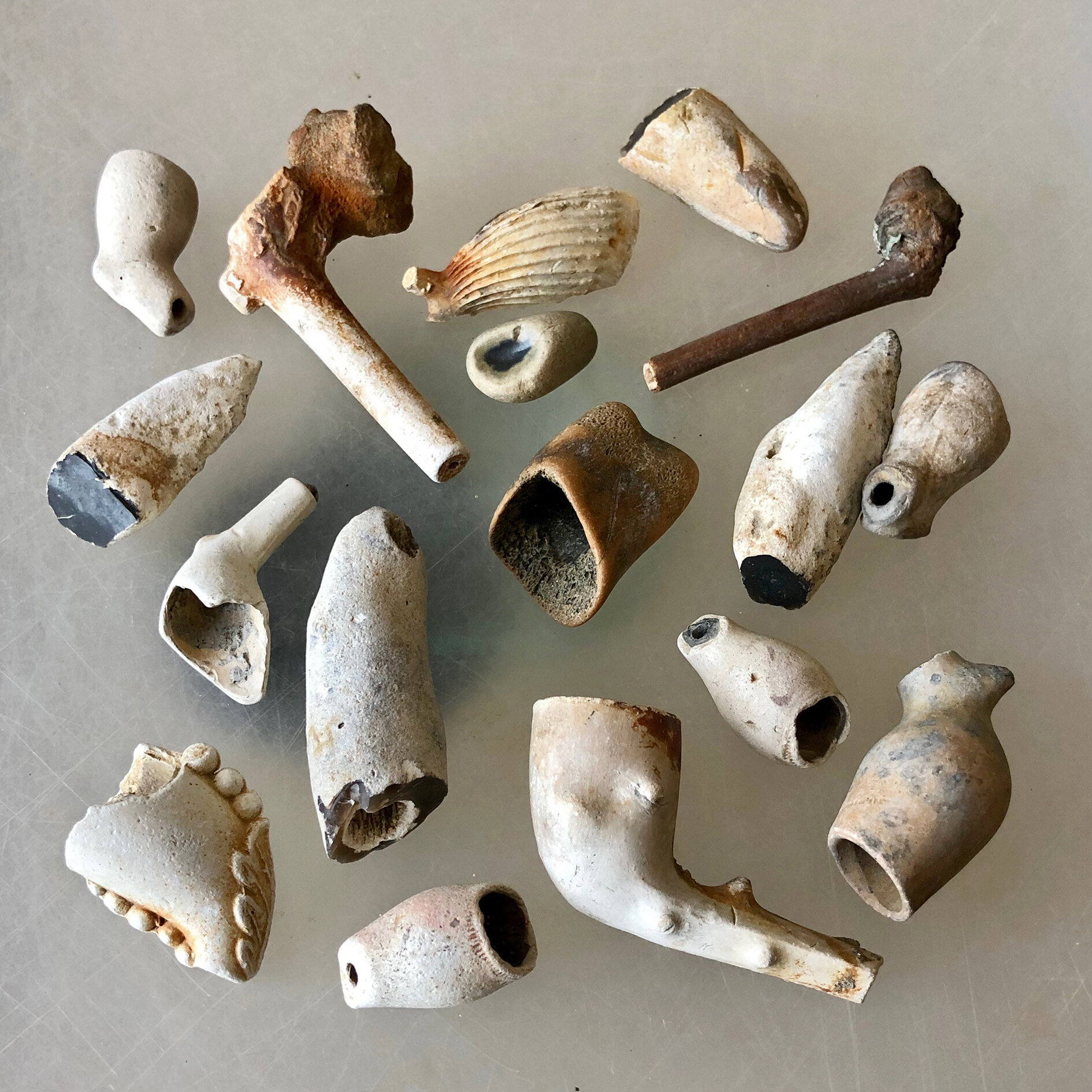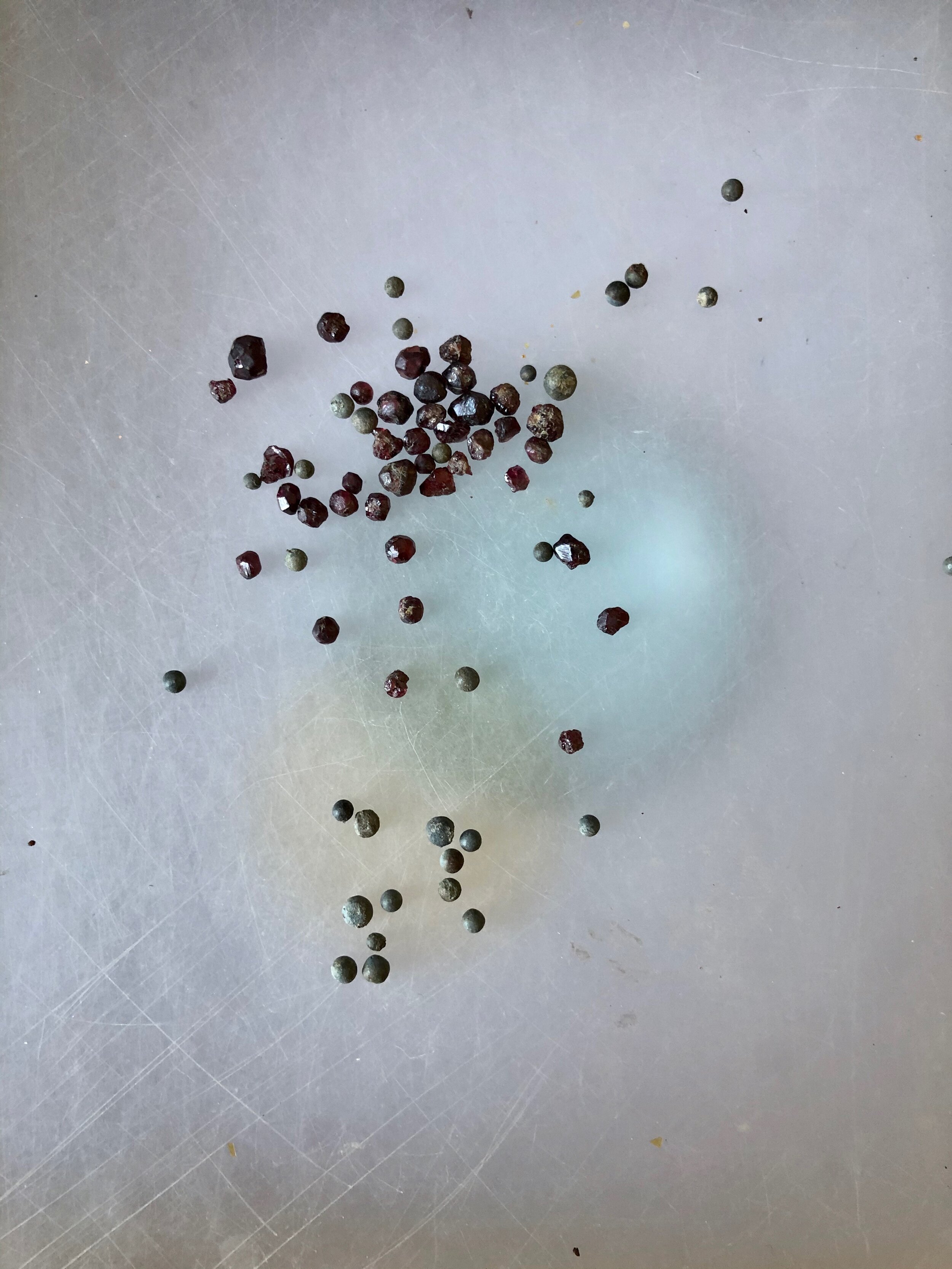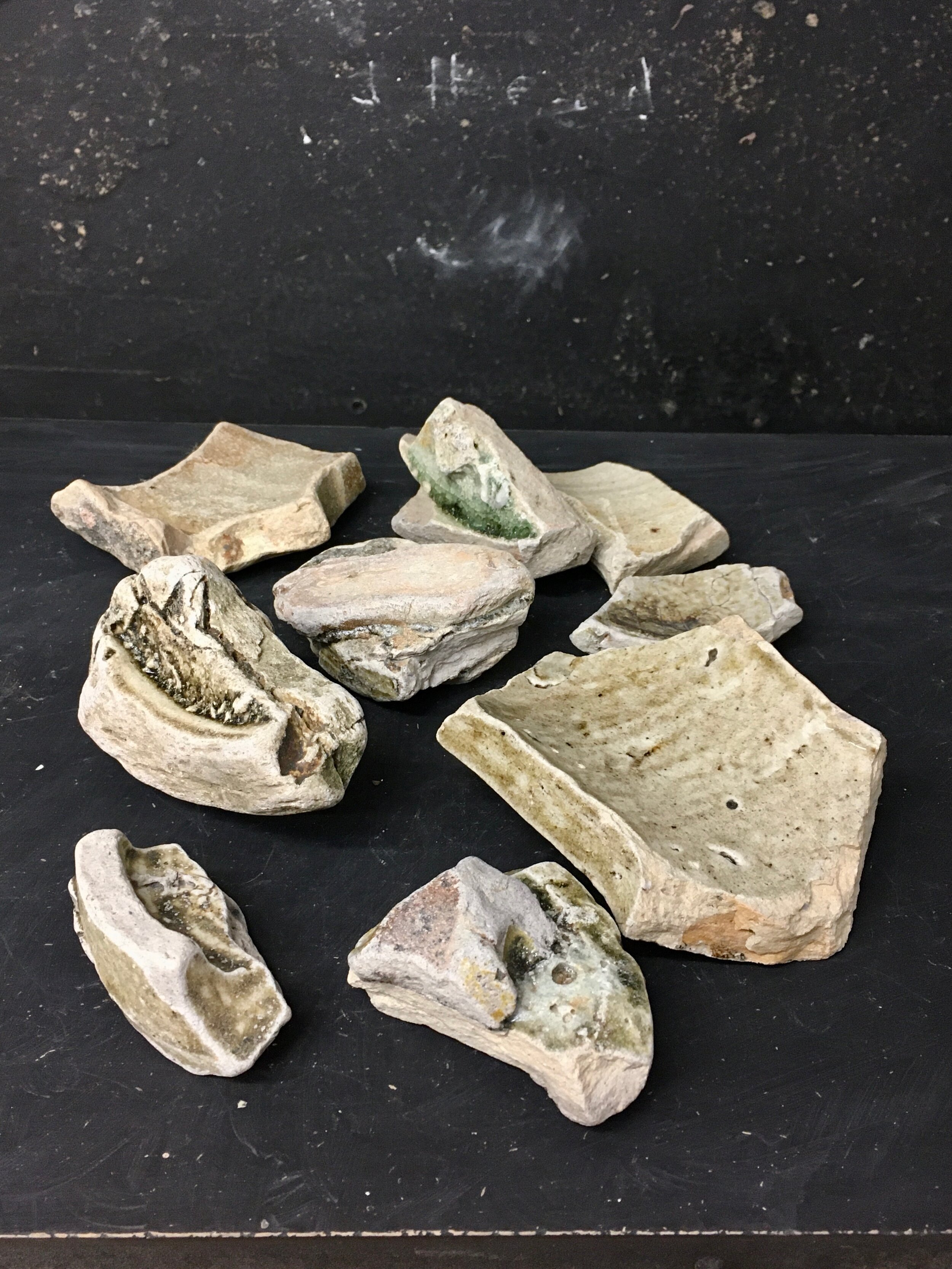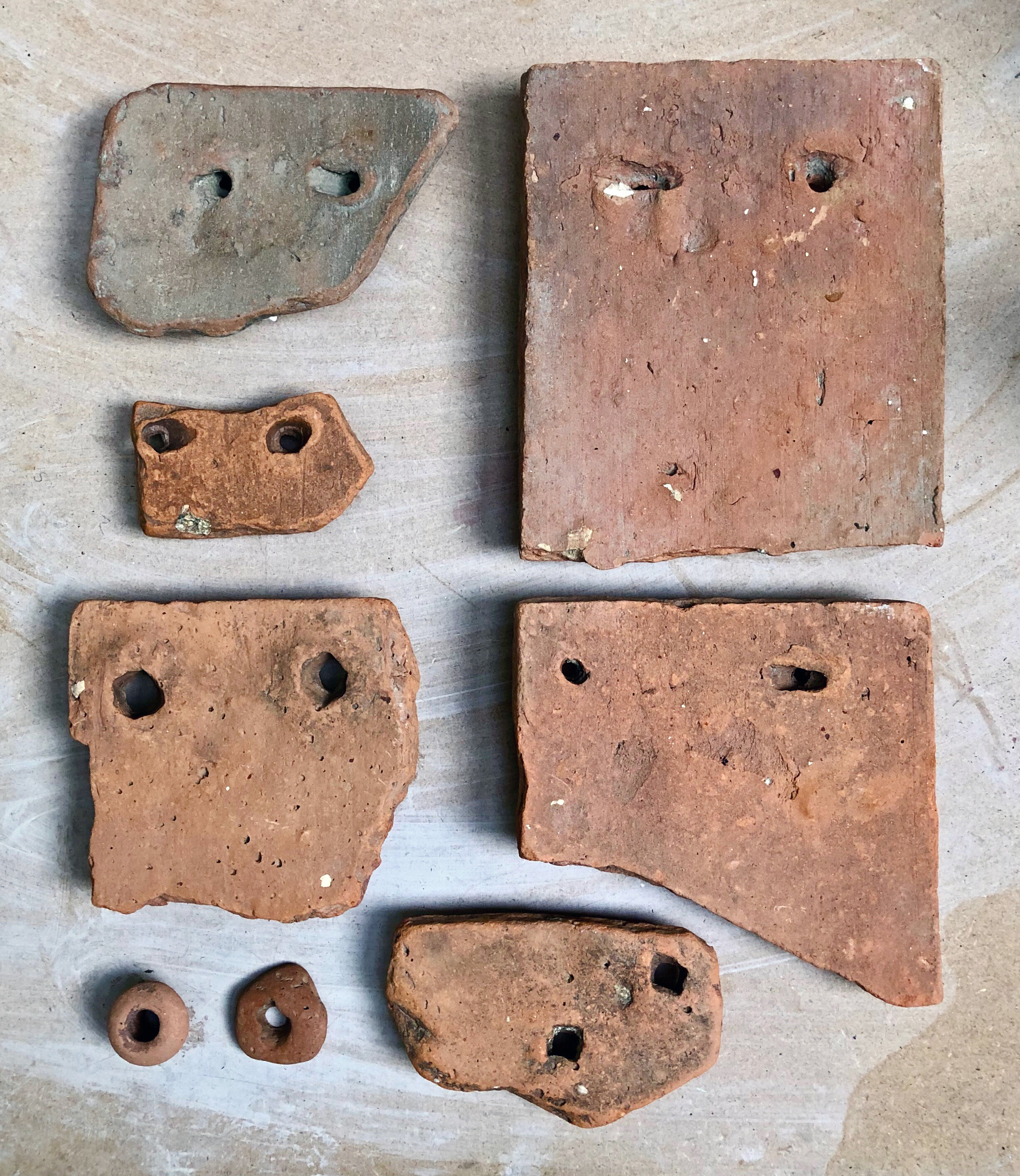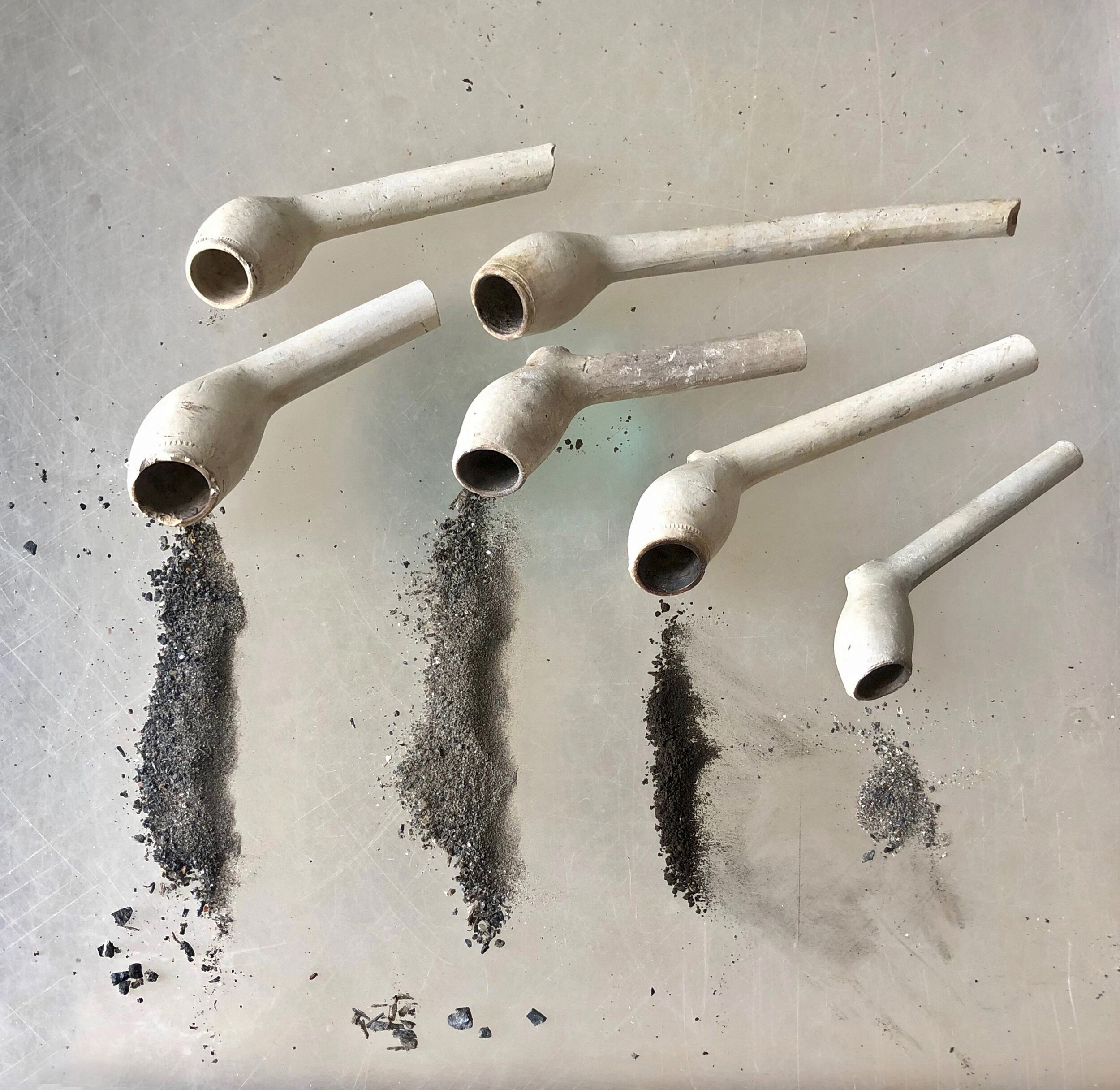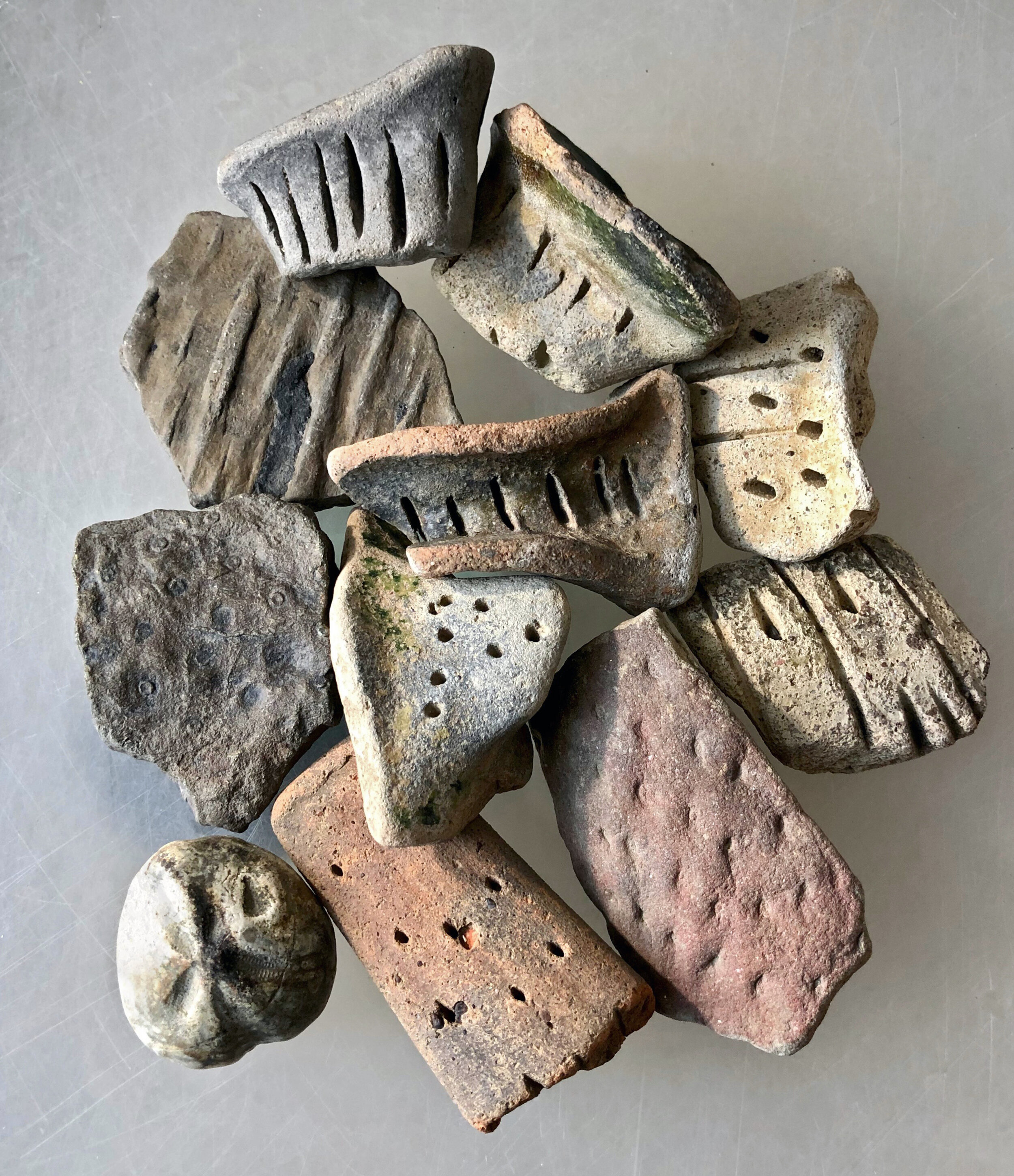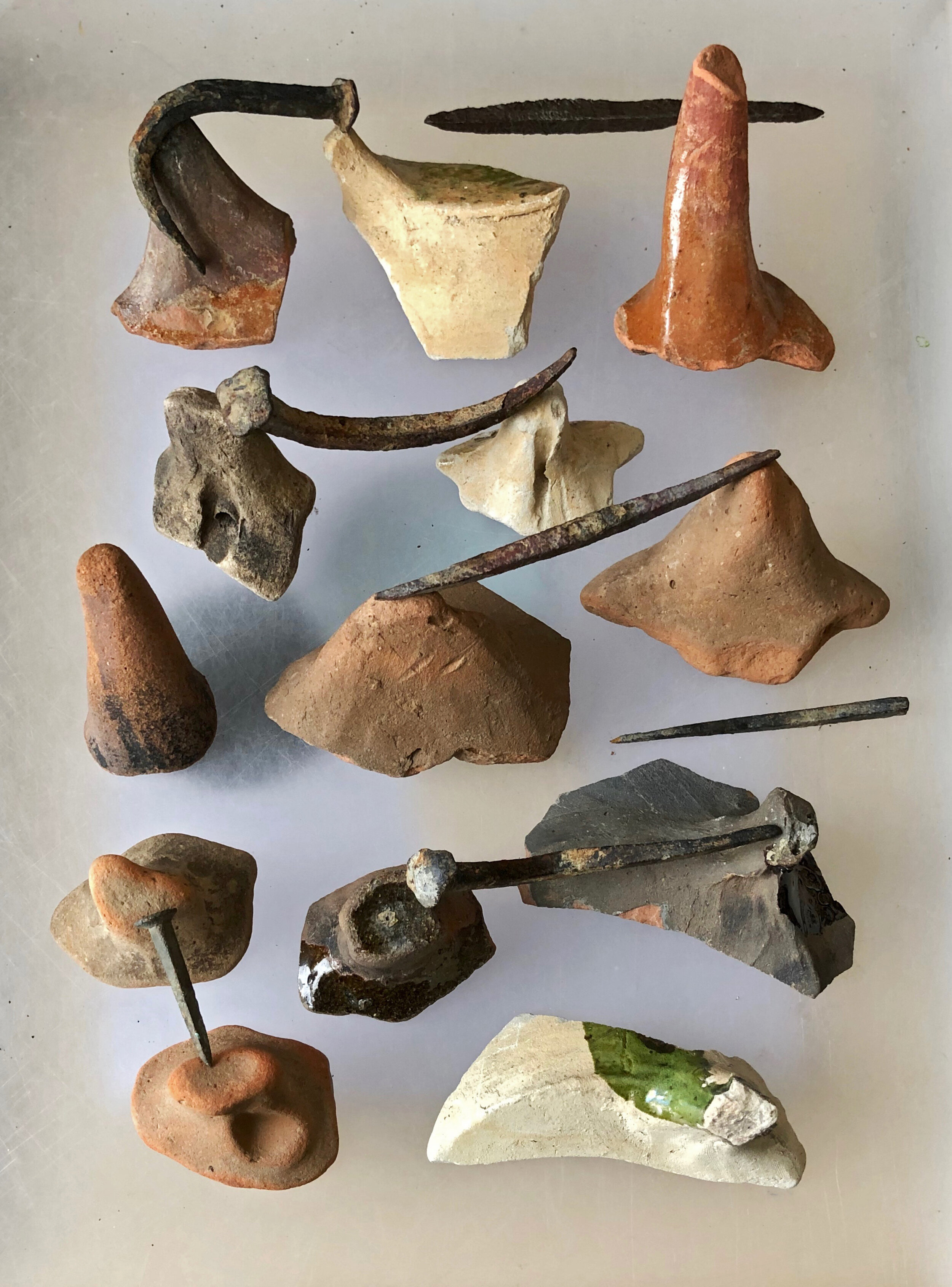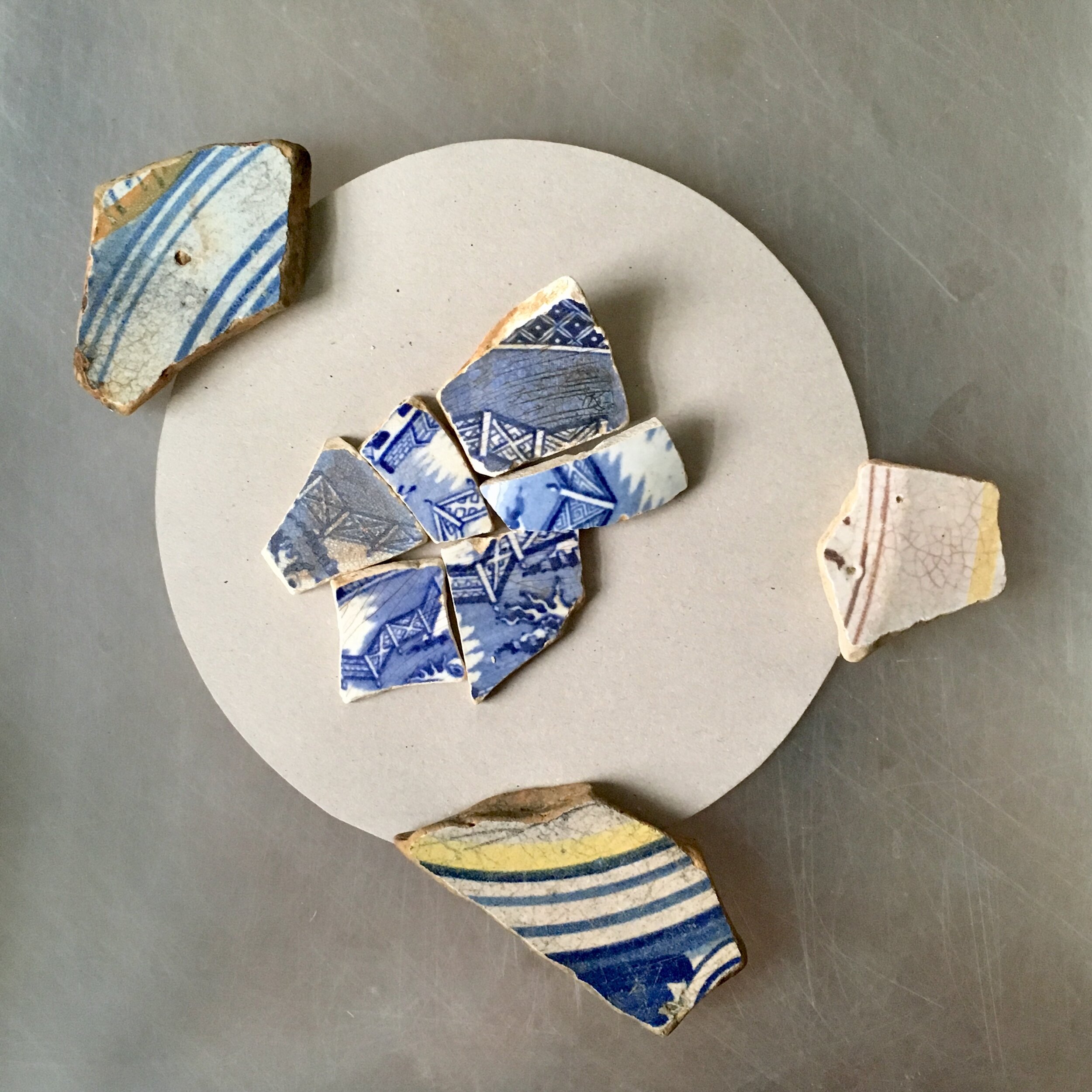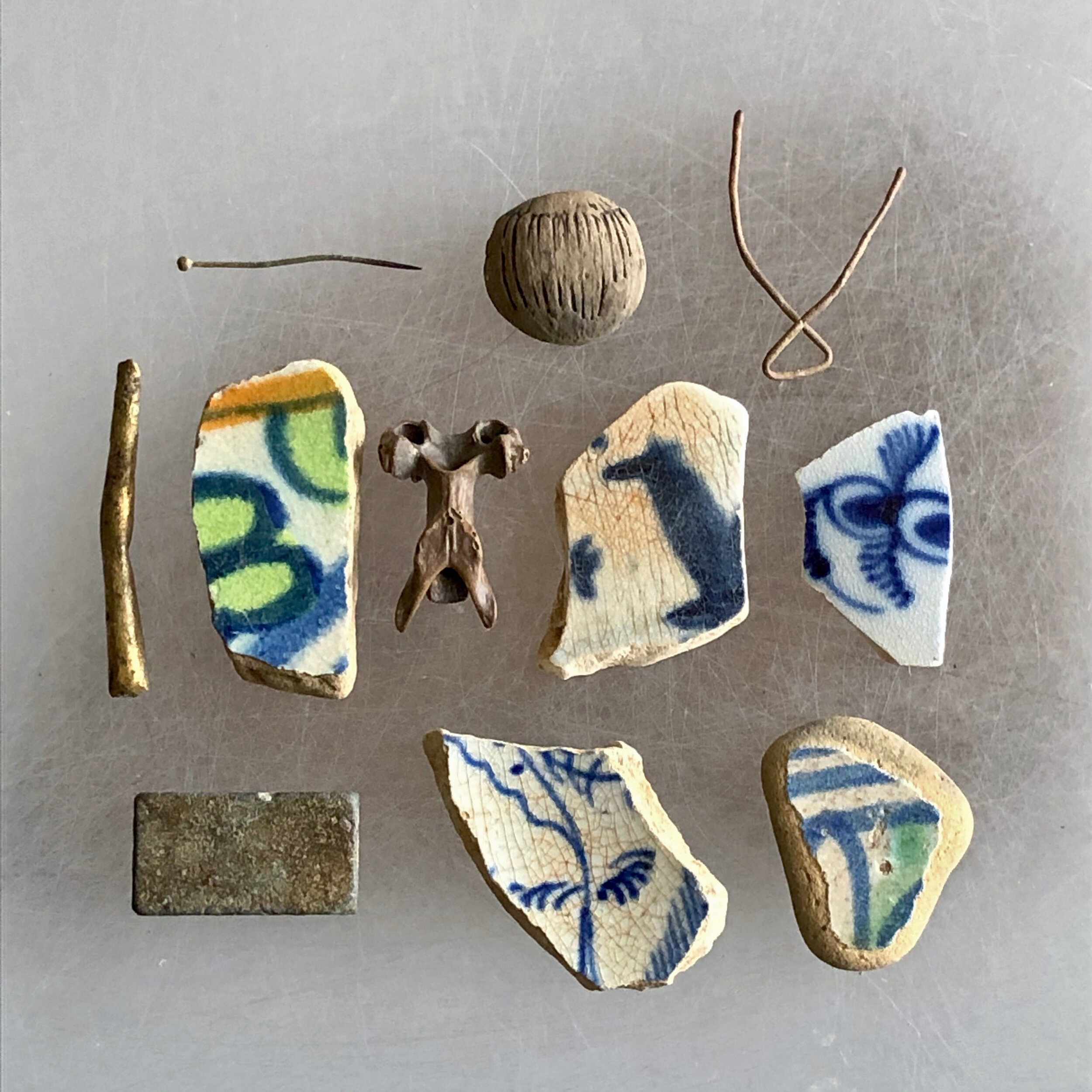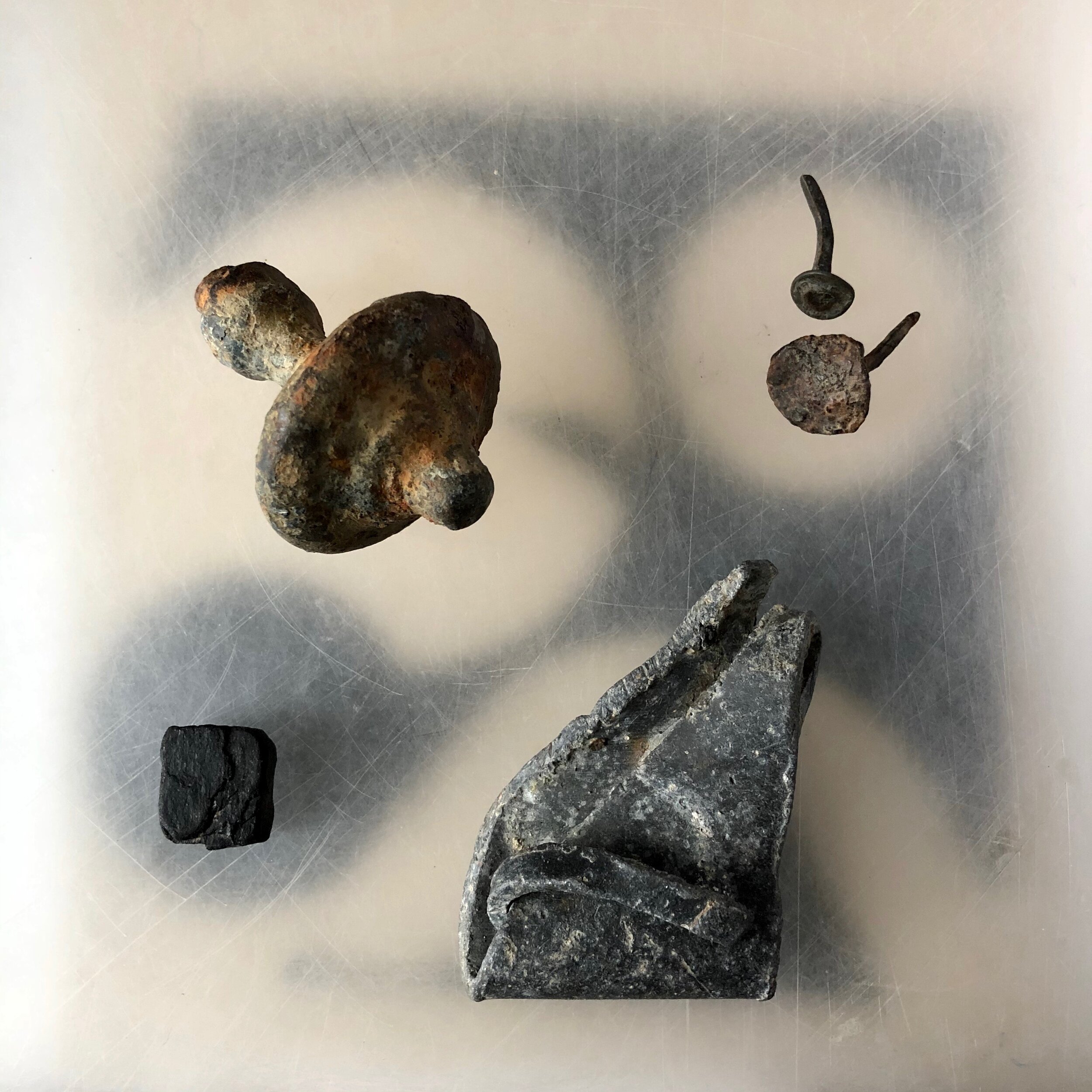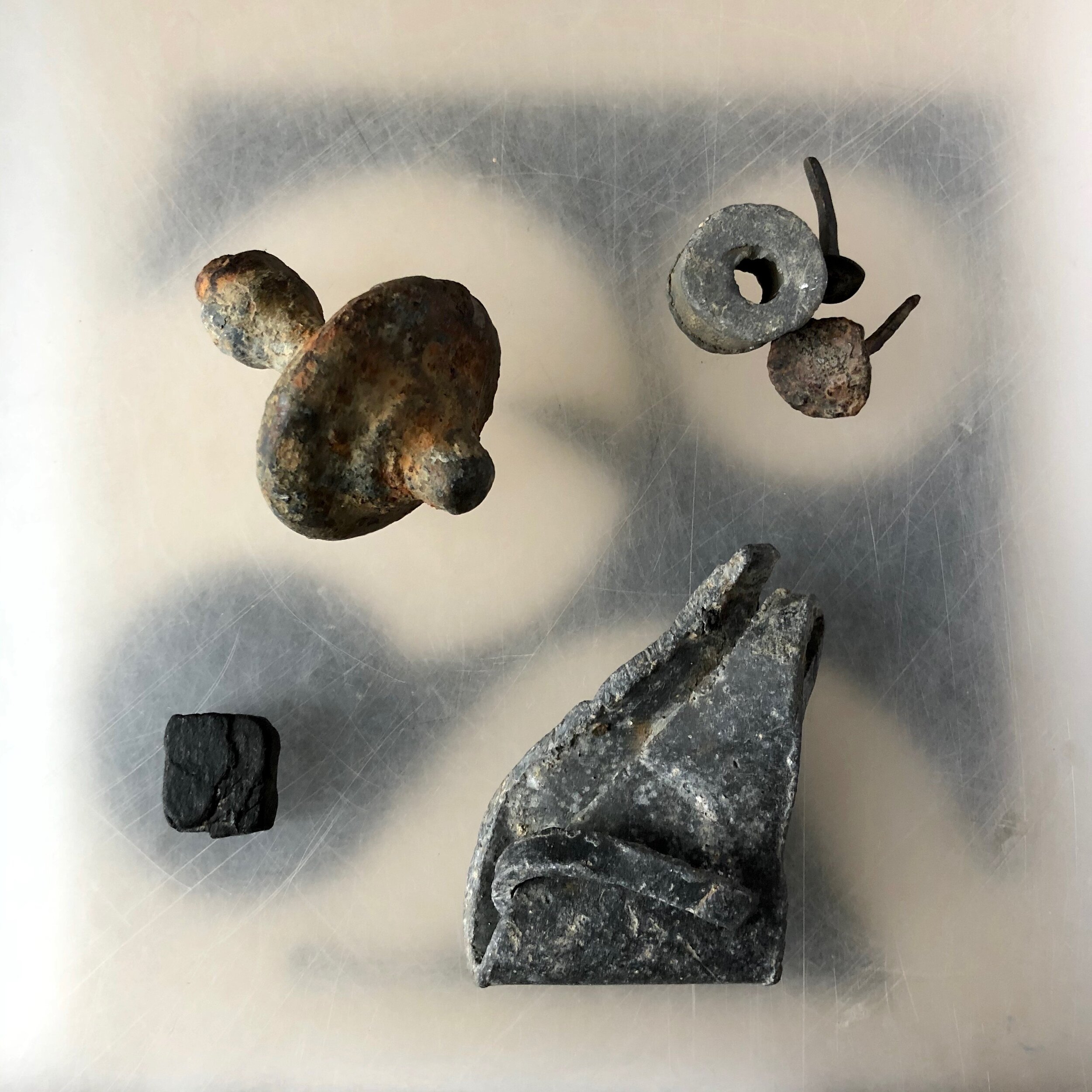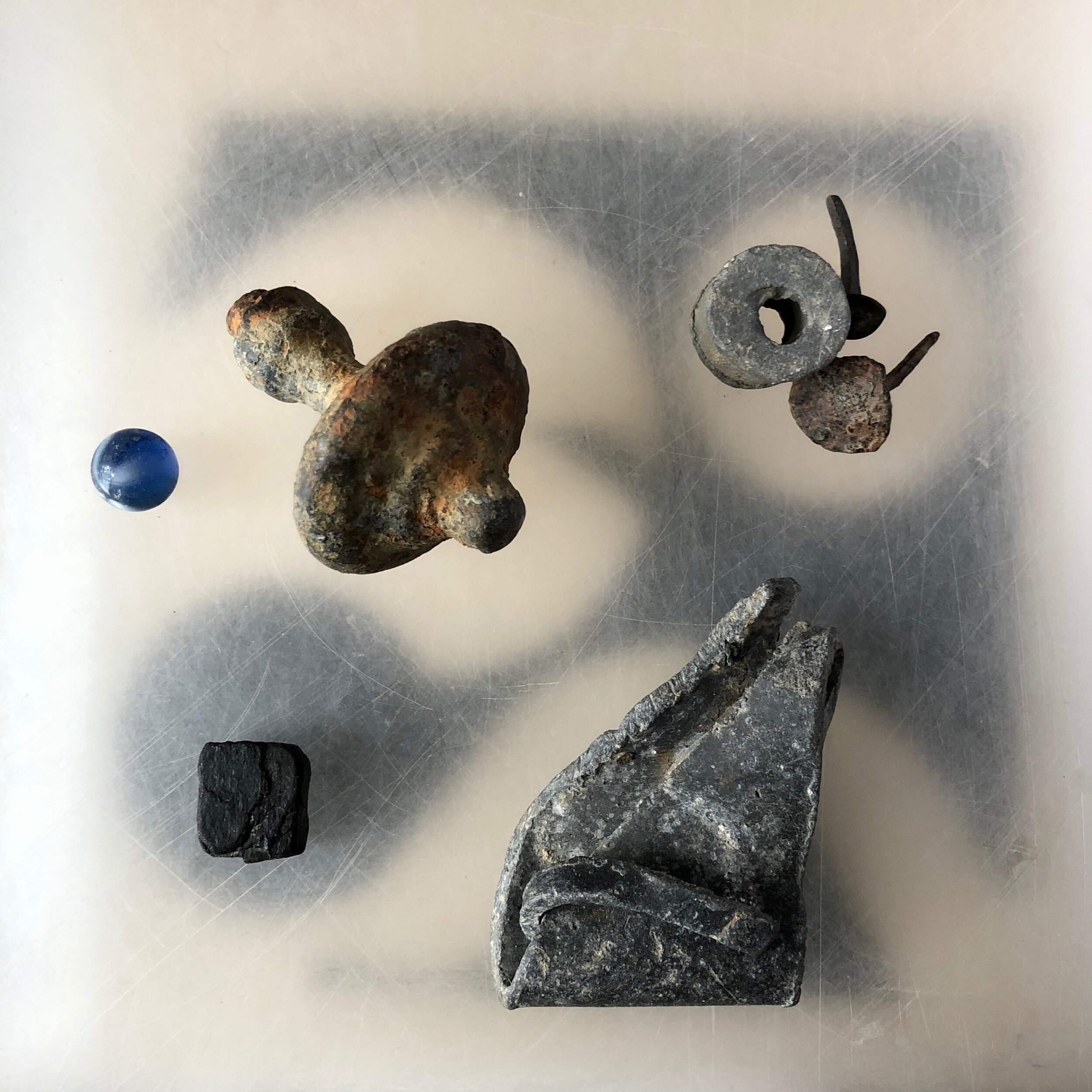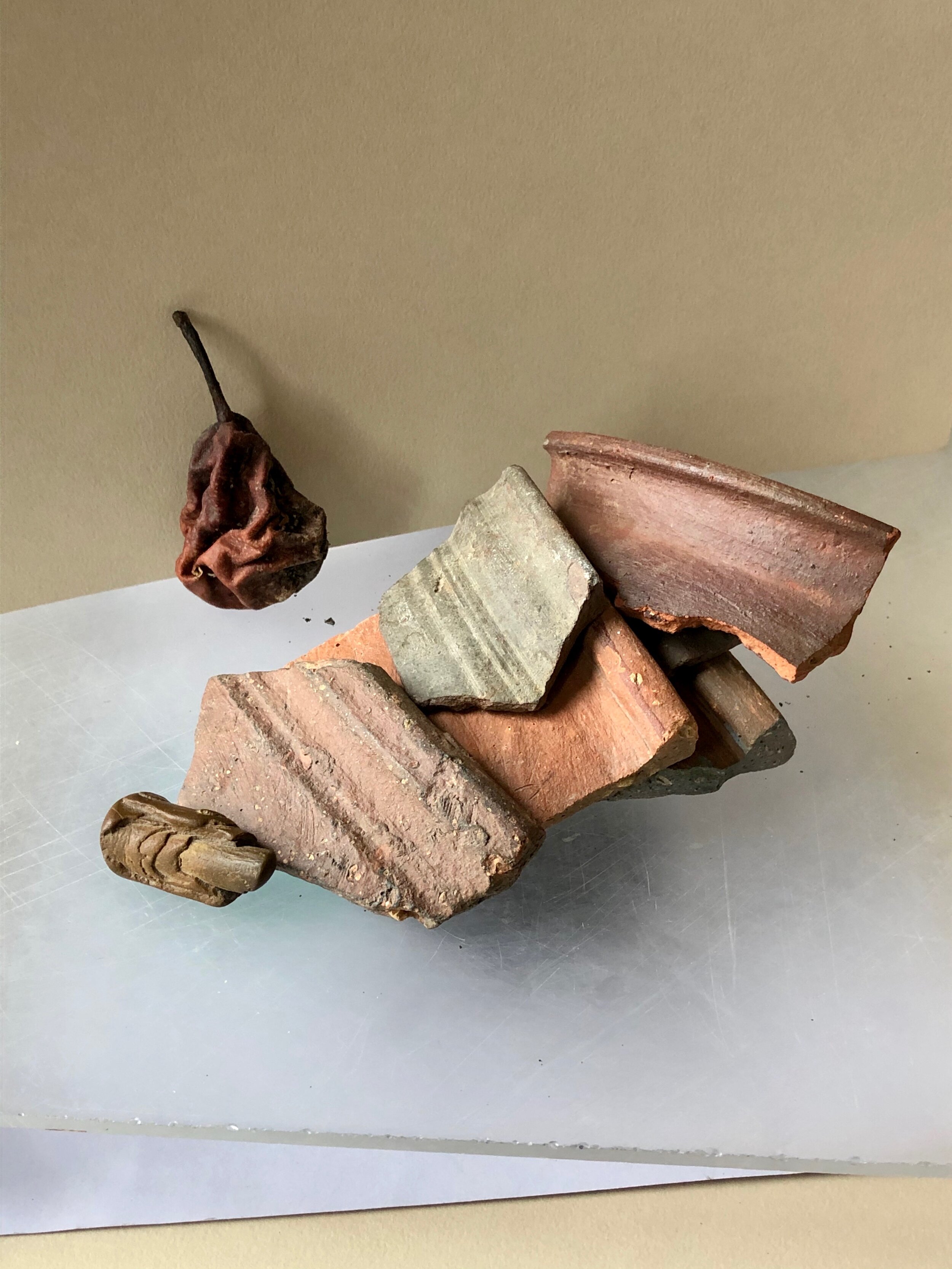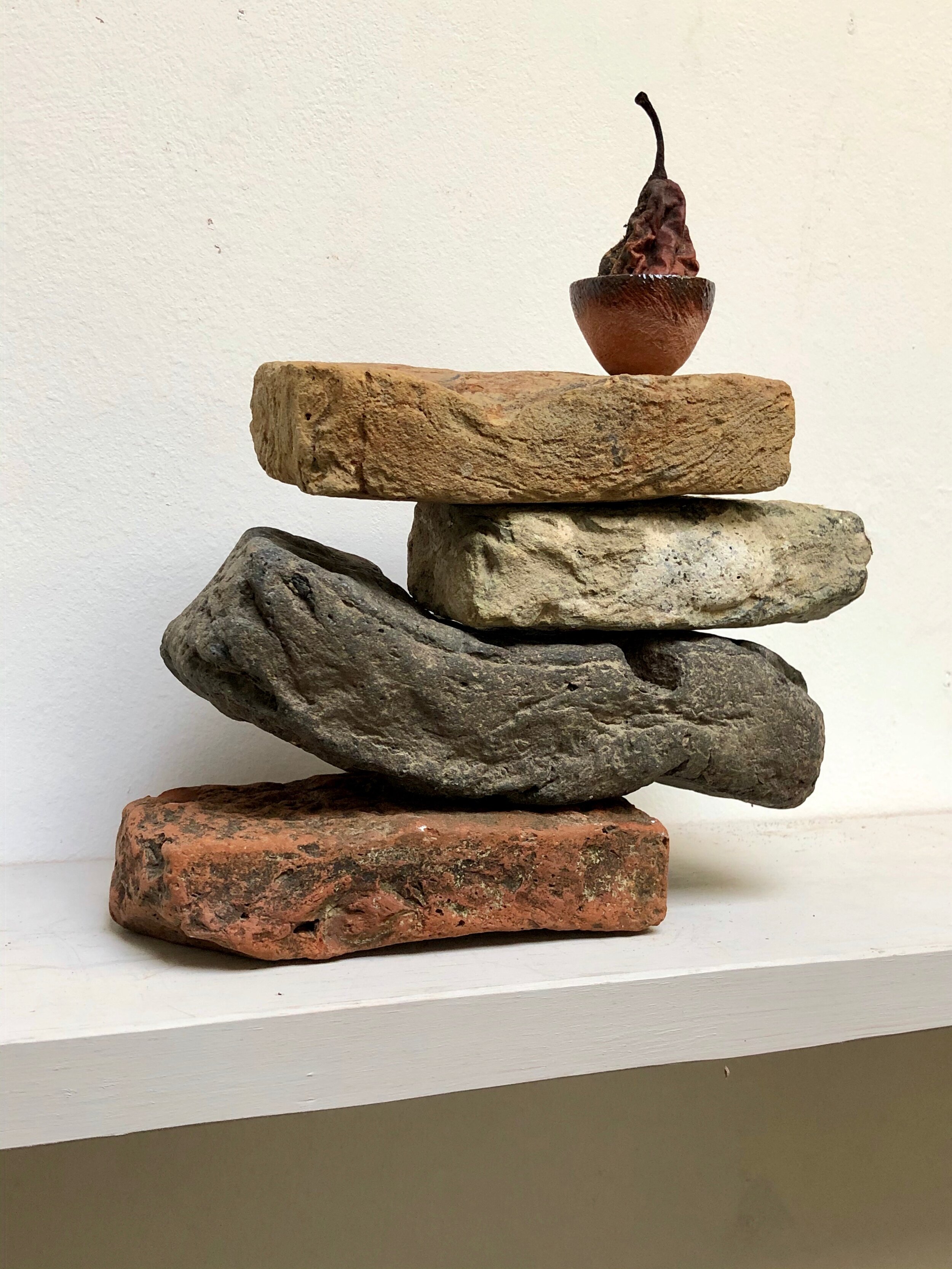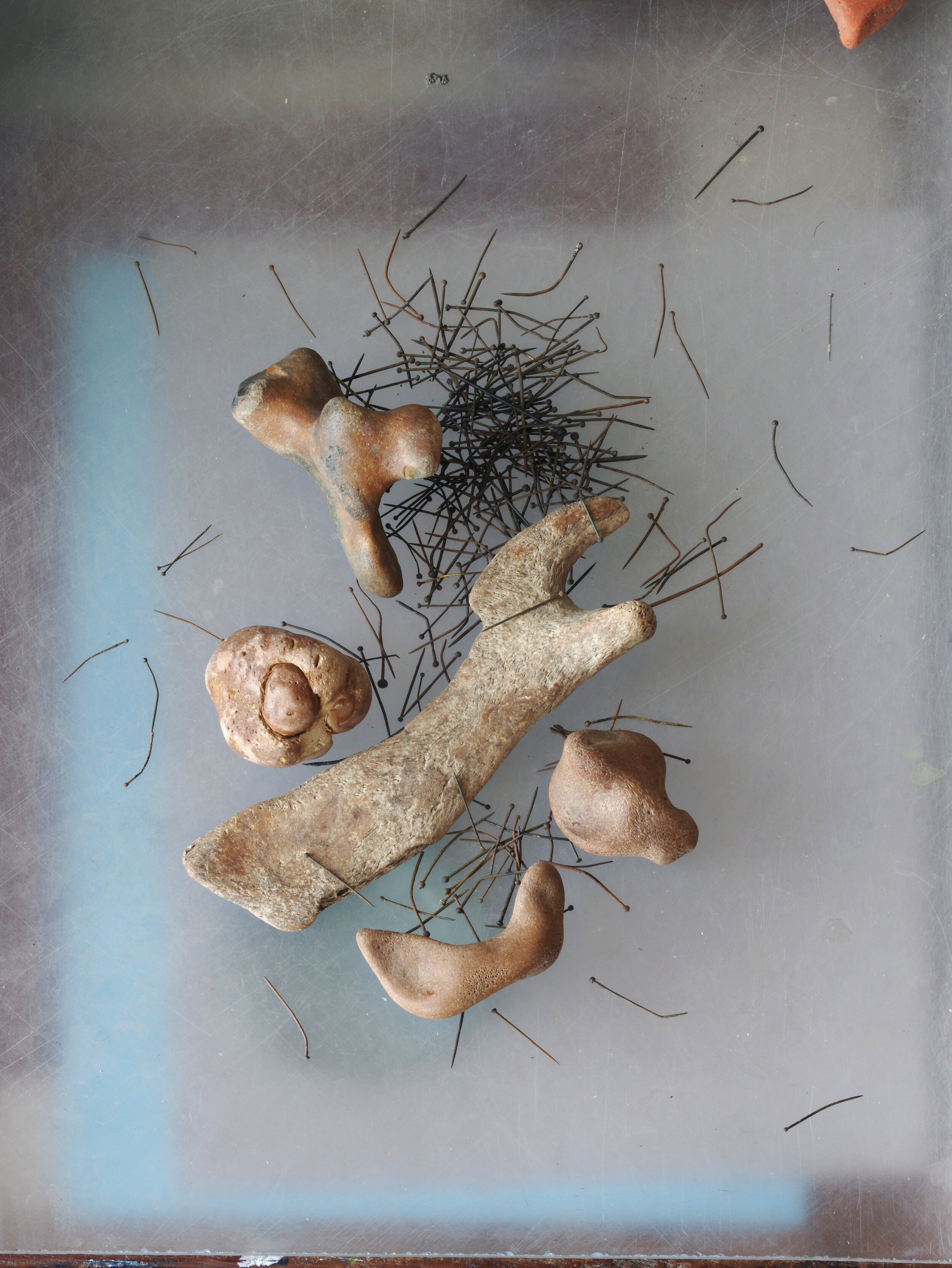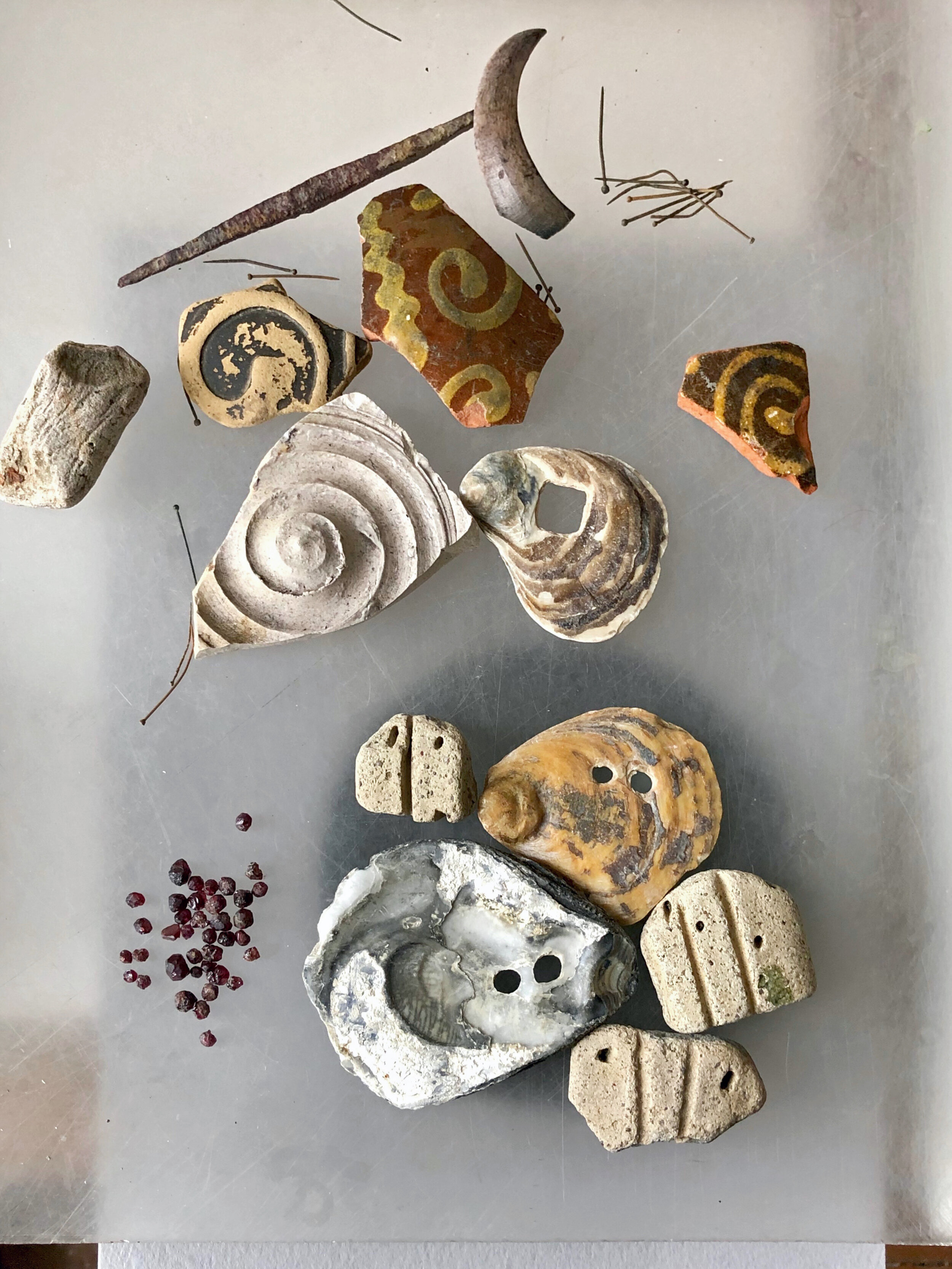tidings
tidings; news information or intelligence, from the old English ‘tidan’ meaning to happen and old English ‘Tidung’ which means ‘occurrence or piece of news’. The word tidings dates back to 1200. ( Macmillan dictionary blog)
tiding; archaic, drift with or as with the help of the tide ( Oxford Languages)
I have visited the Thames foreshore many times in the last three years, searching for material evidence of London's past. For a few hours at low tide it is possible to step into an elemental landscape of mud, water, sand and stone. Here the broken remains of objects lie scattered: most too far gone to be recognisable. Occasionally something will catch my eye and demand further attention. I search in a way that is described as ‘eyes only’ collecting pieces that are visible at the surface according to rules that are set out in my Port of London permit.
Thephotographs below show finds from single visits to the foreshore. They include animal bones and fossils, parts of Medieval tiles and Roman beakers. Here are pins that once held together a Tudor dress and lead shot slightly flattened on one side where it hit its target hundreds of years ago. Together these objects form a fragmented collage of London's past spanning 2,000 years. The objects I find are rarely complete. There is always a mystery to unravel and an imaginative leap to make the object whole again.
Handling these pieces of pottery, metal and bone gives me a tangible connection with London’s history. It helps that I work as a sculpture technician. My first questions when I find something on the foreshore are, “What is it made of?” and “How is it made?” When I hold a potsherd, I see and feel how the clay has yielded to the touch of the potter. Sometimes fingerprints are clearly visible and it is possible to place my finger in an impression made 700 years ago. Handling these pieces helps me understand how they were made and used. In their broken state they offer new ways of being held and suggest new uses.
I enjoy paying close attention to these objects and photography is key to how I do that. I am bringing them into sight, into circulation, as things to be held and researched, shown and cherished, after years of being forgotten and abandoned. A process of research, classification begins at home, often involving the grouping of finds in an attempt to discern the differences and similarities that define them as particular objects from a particular time and place. The photographs in this sequence show some of those groupings. Garnets separated from lead shot, all the Seigburg pottery I have collected and a collection of clay pipes that are between 100 and 400 years old.
The finds I collect are never fixed in one position. They have been sorted and moved by the river for hundreds of years and I want to carry on this process . They are endlessly reconfigured as I look for new connections and visual qualities that can play off each other.
